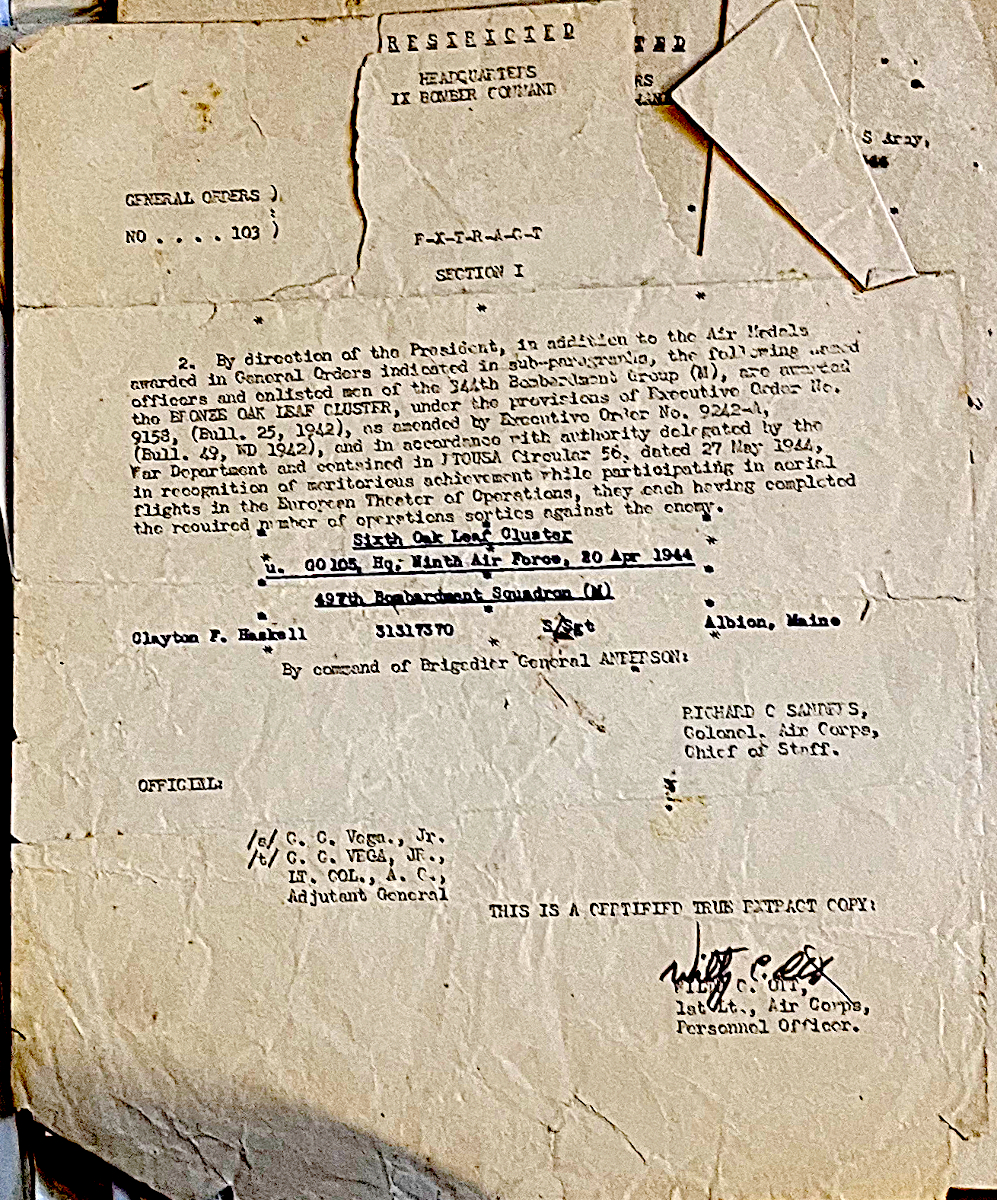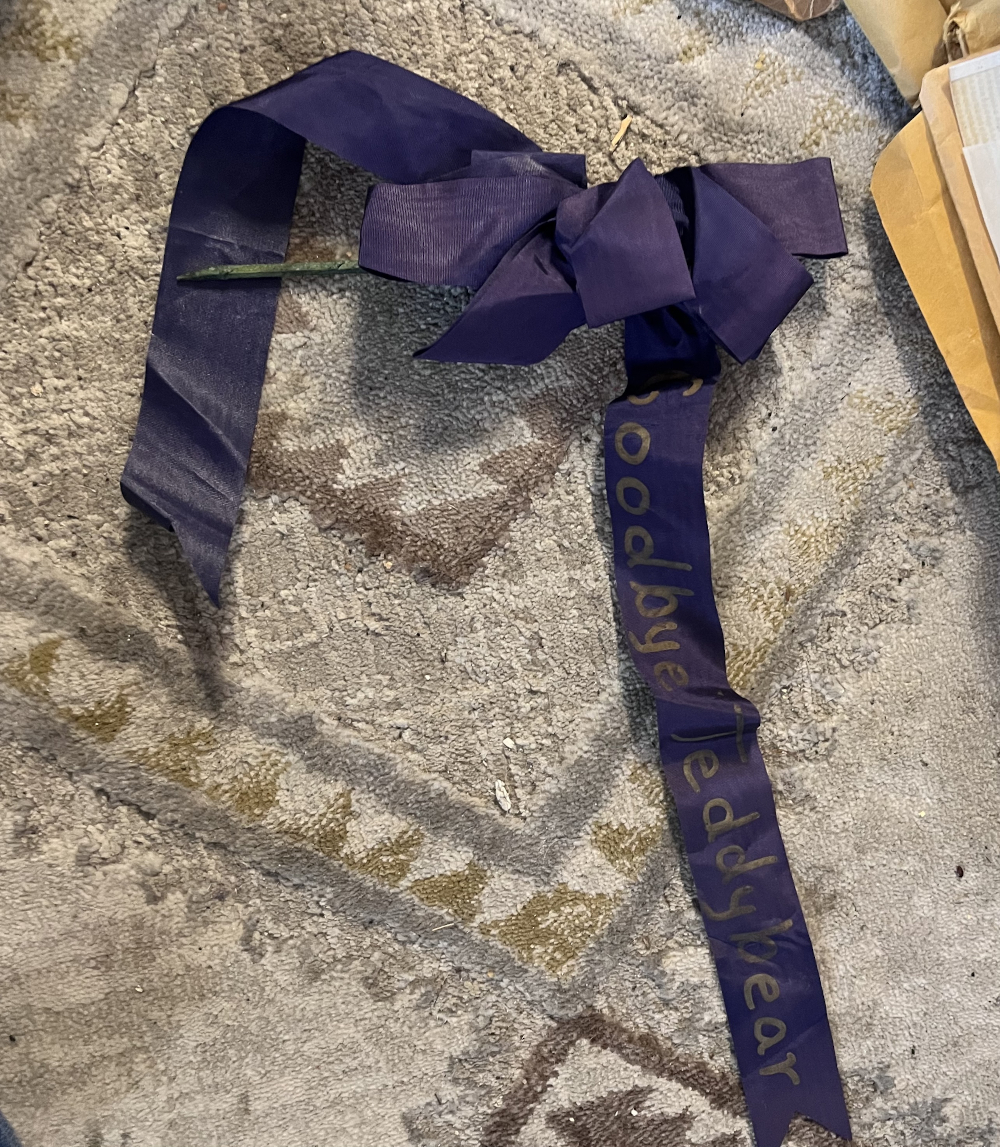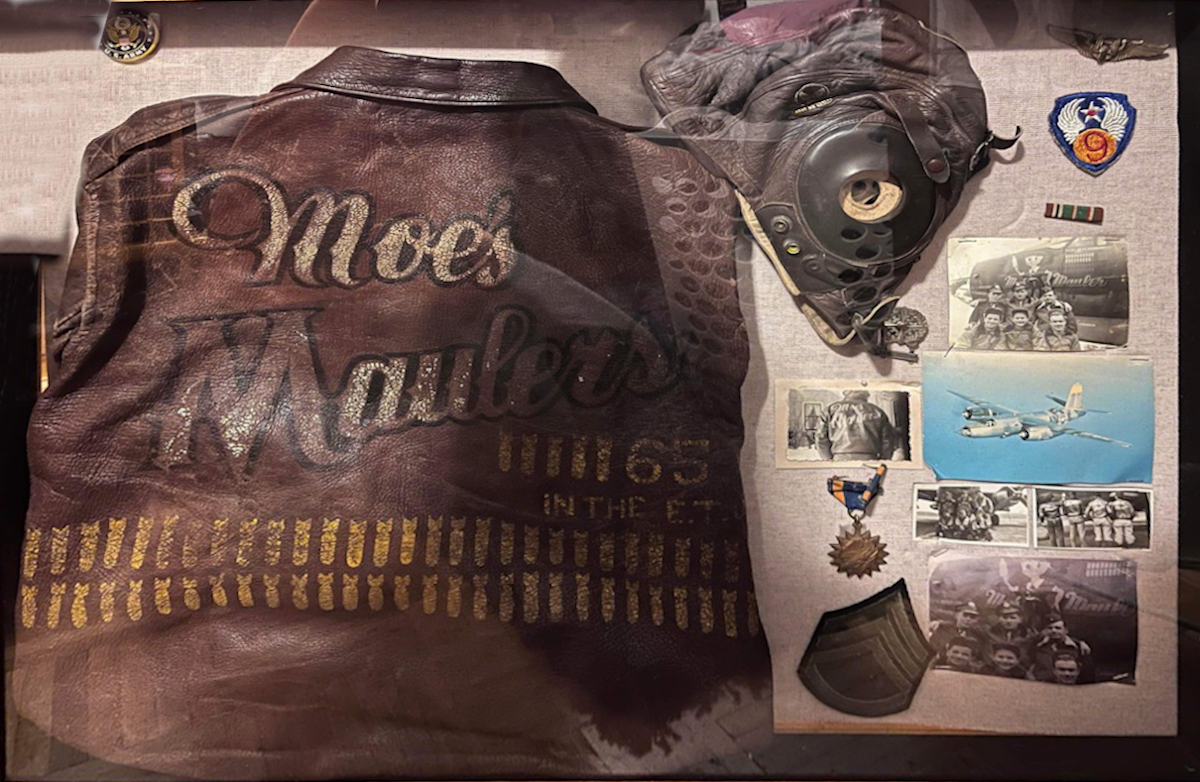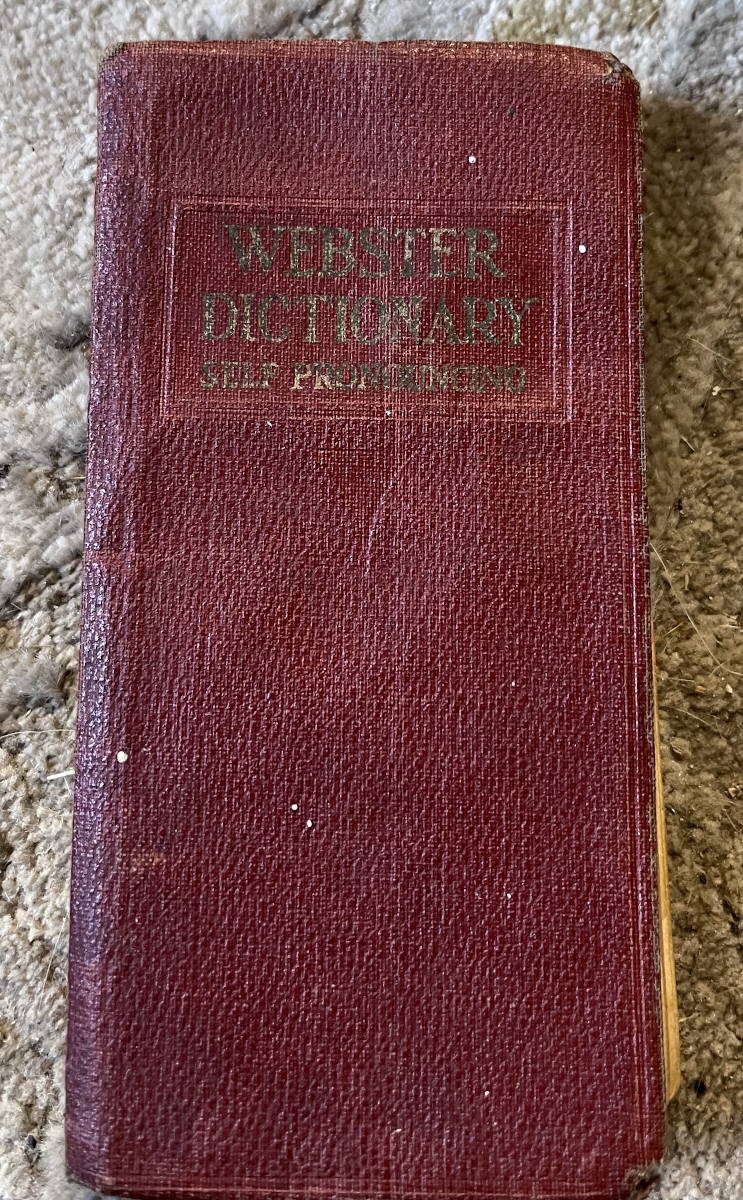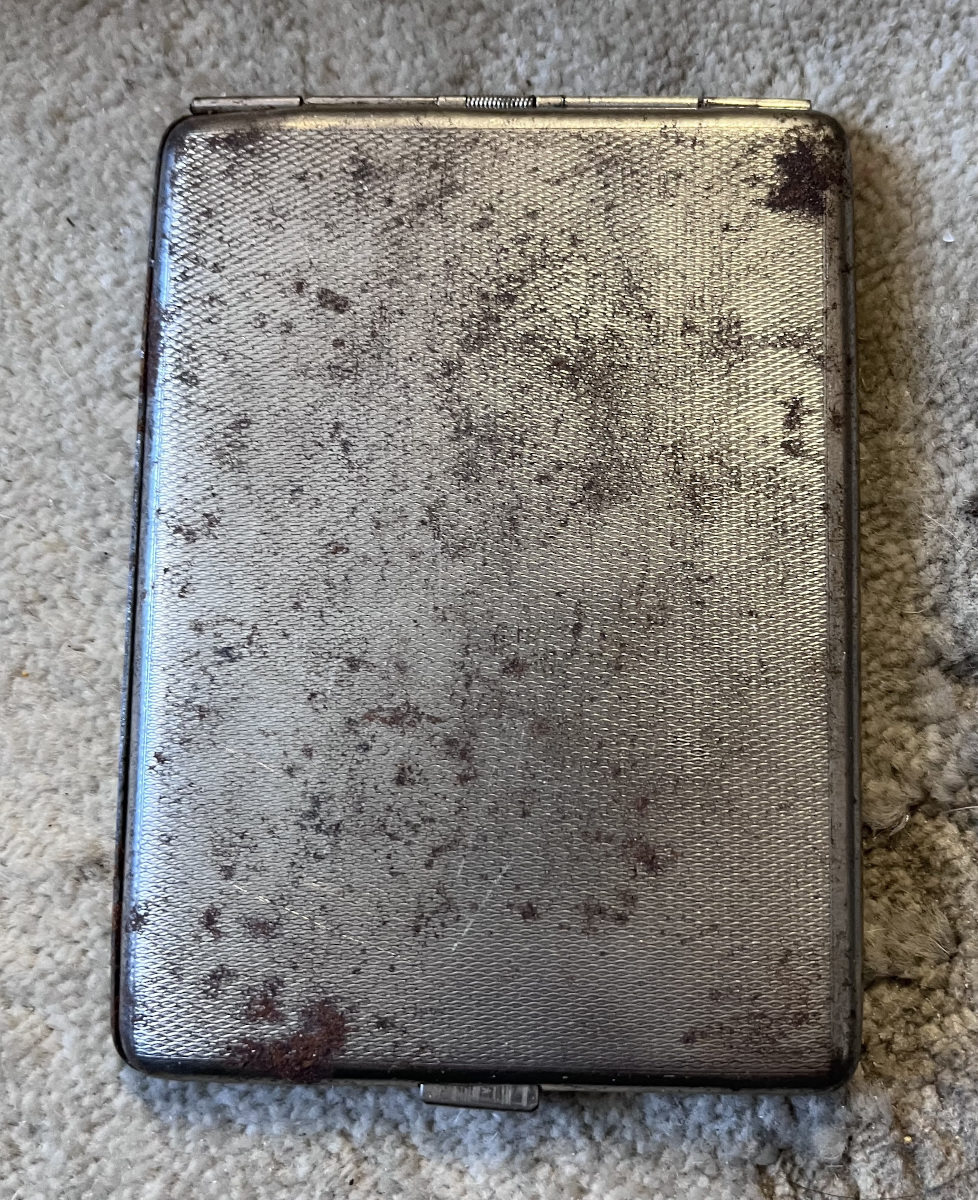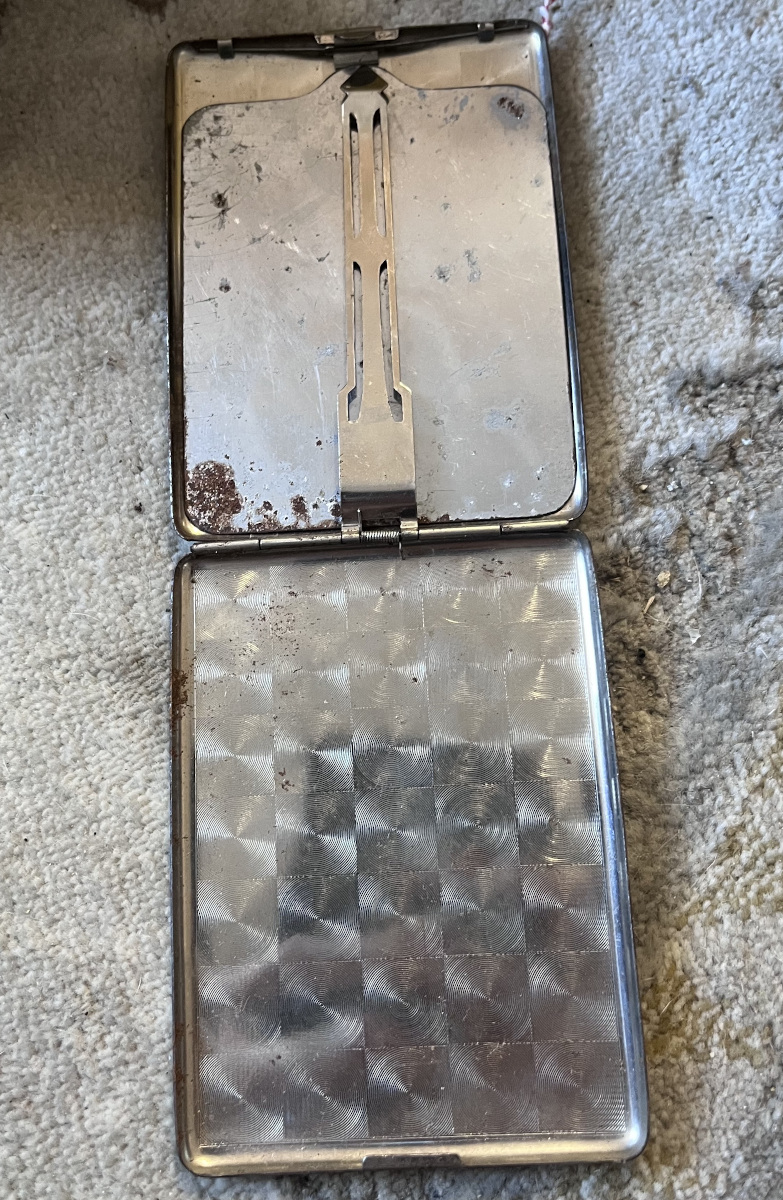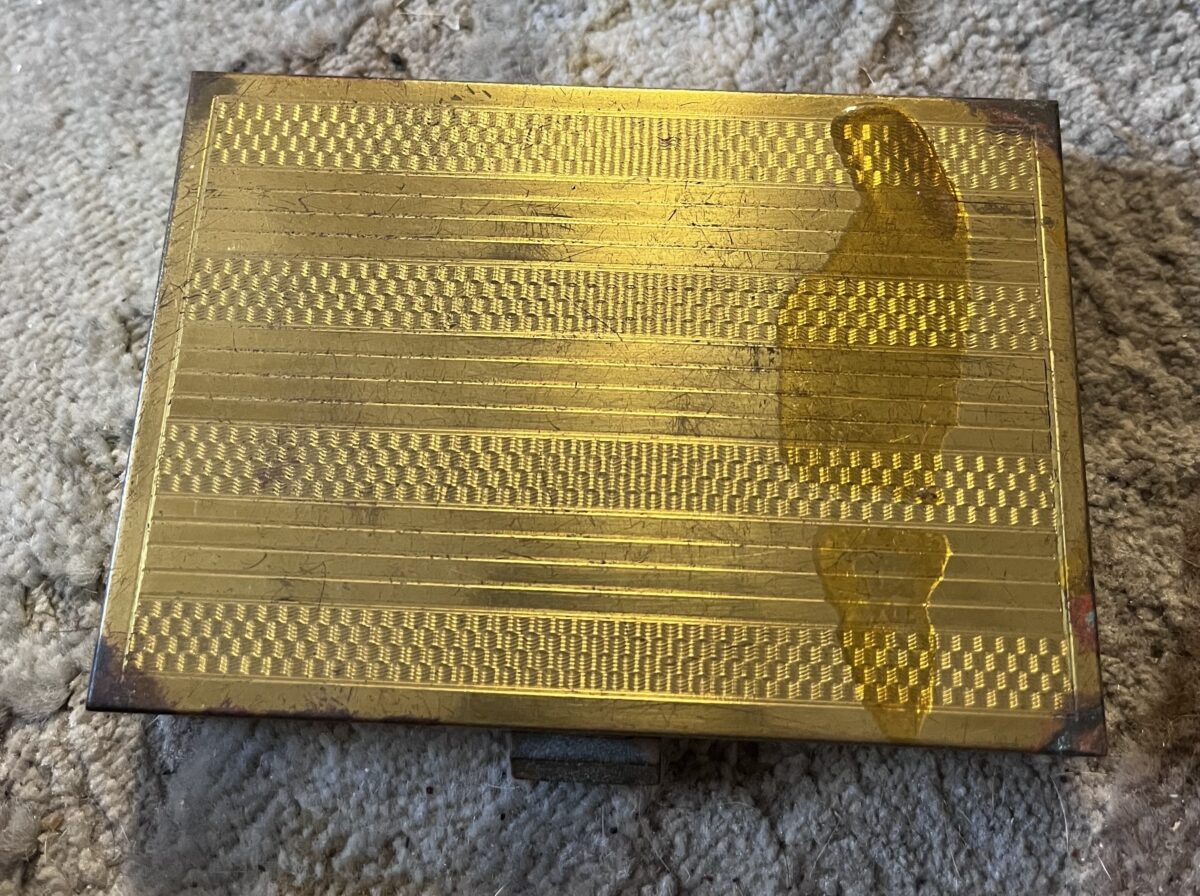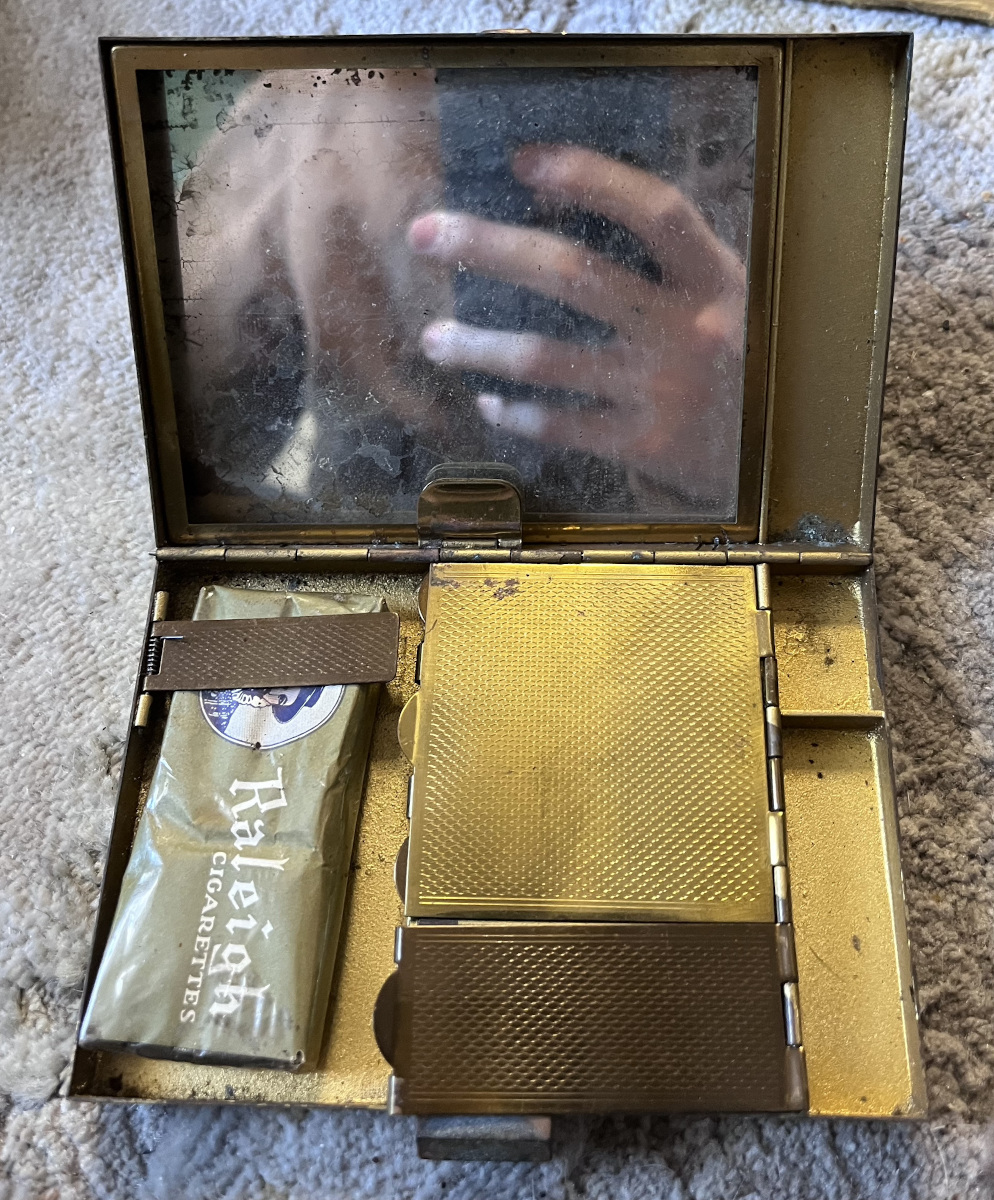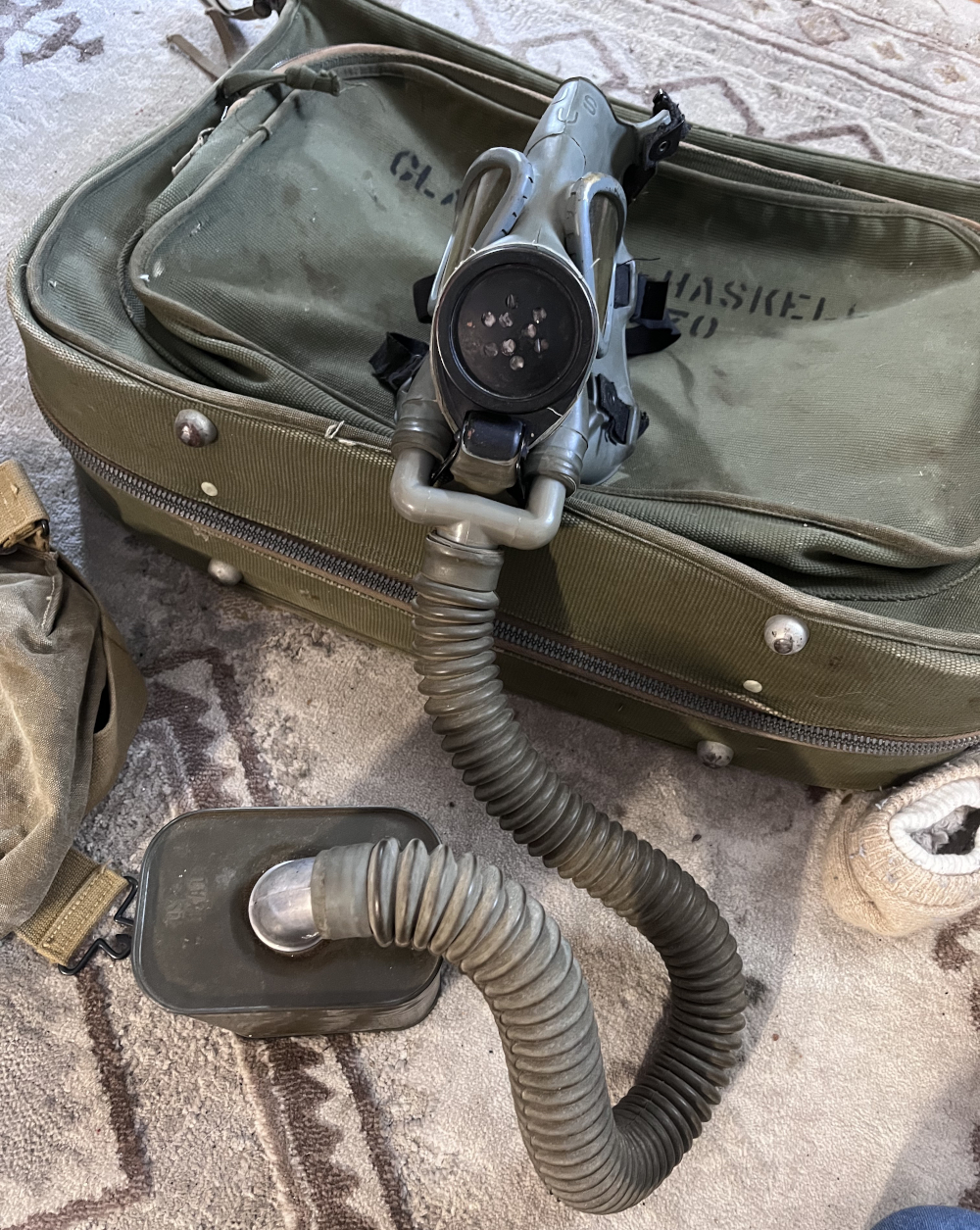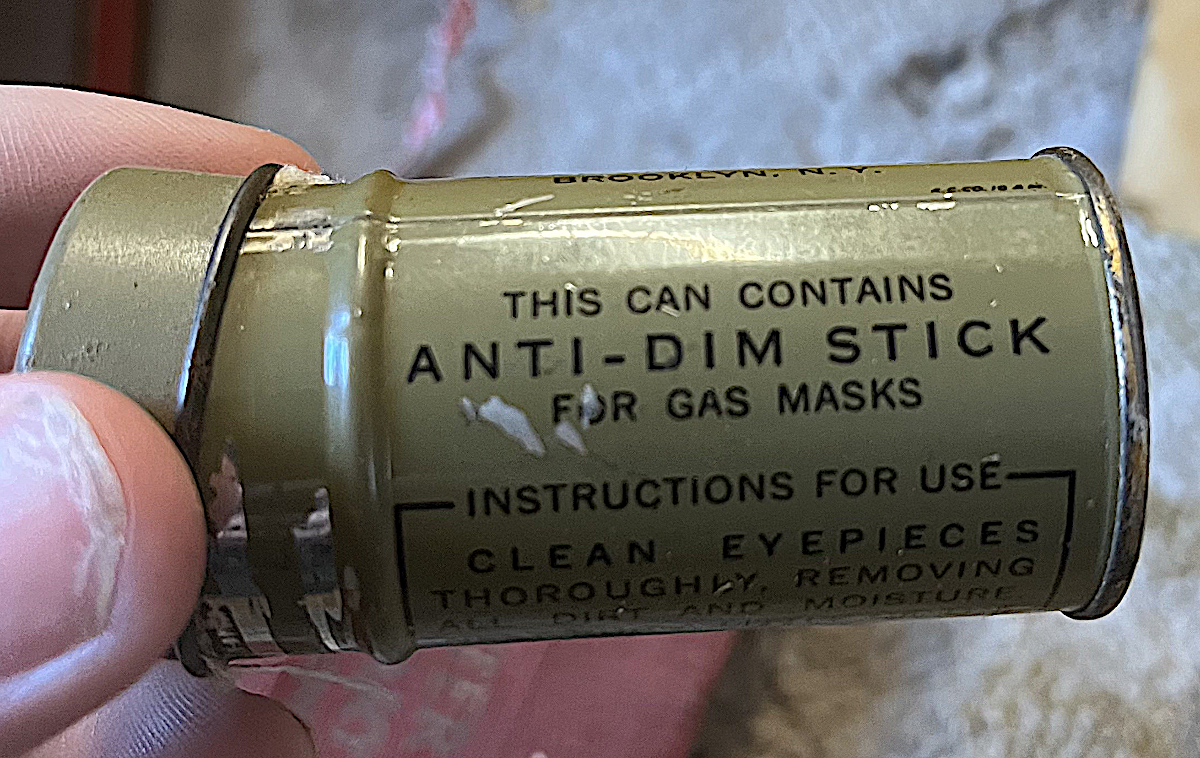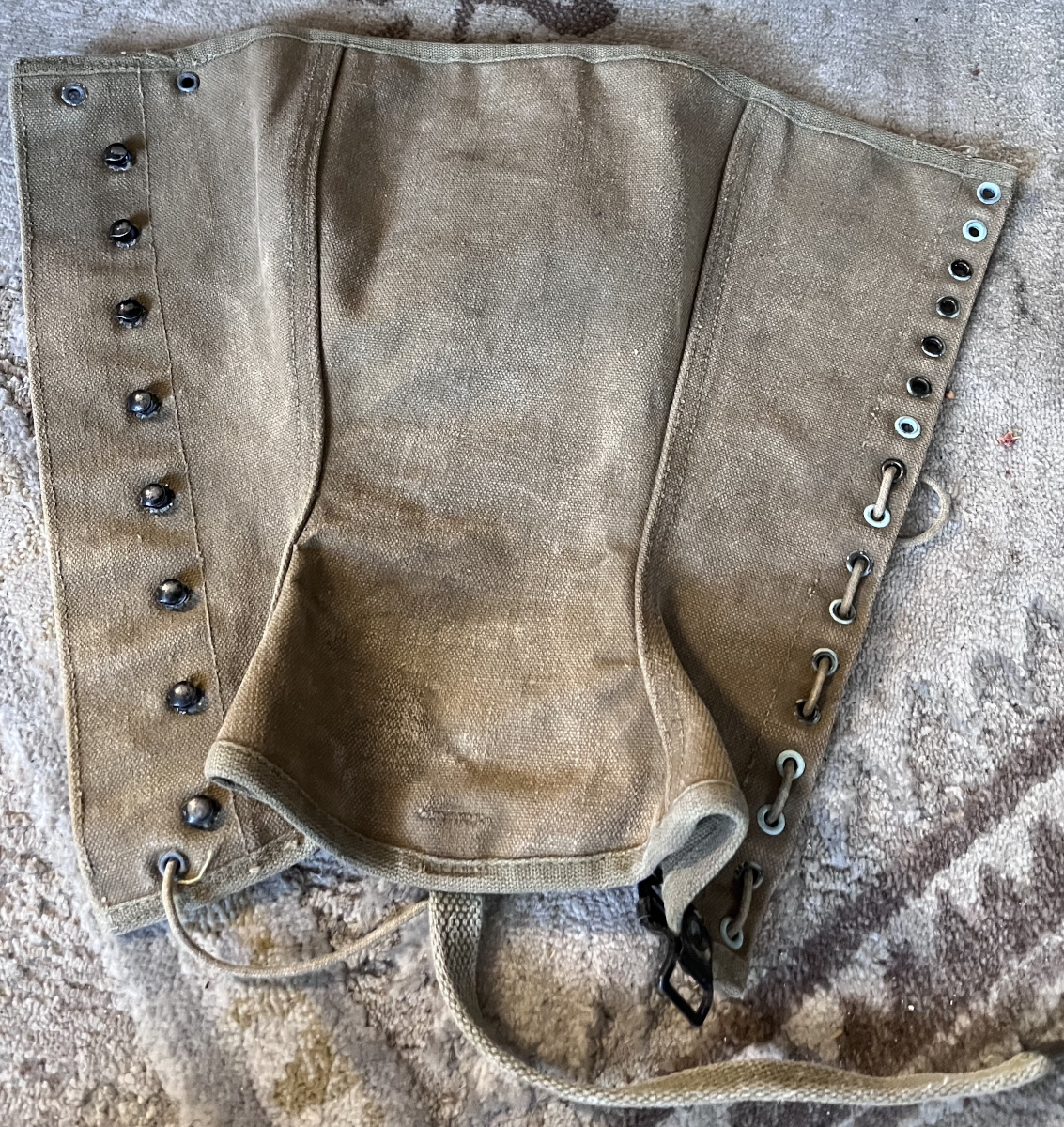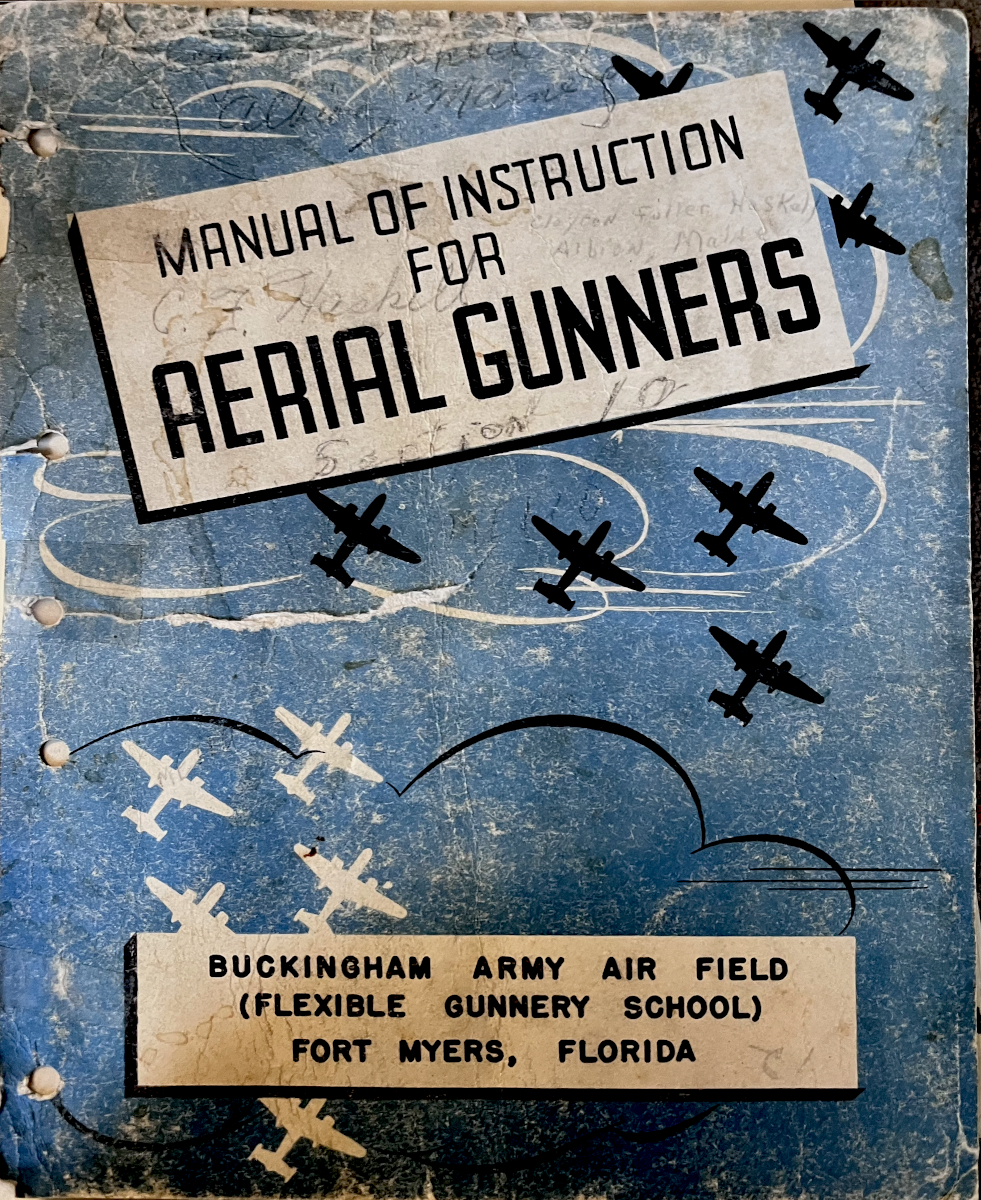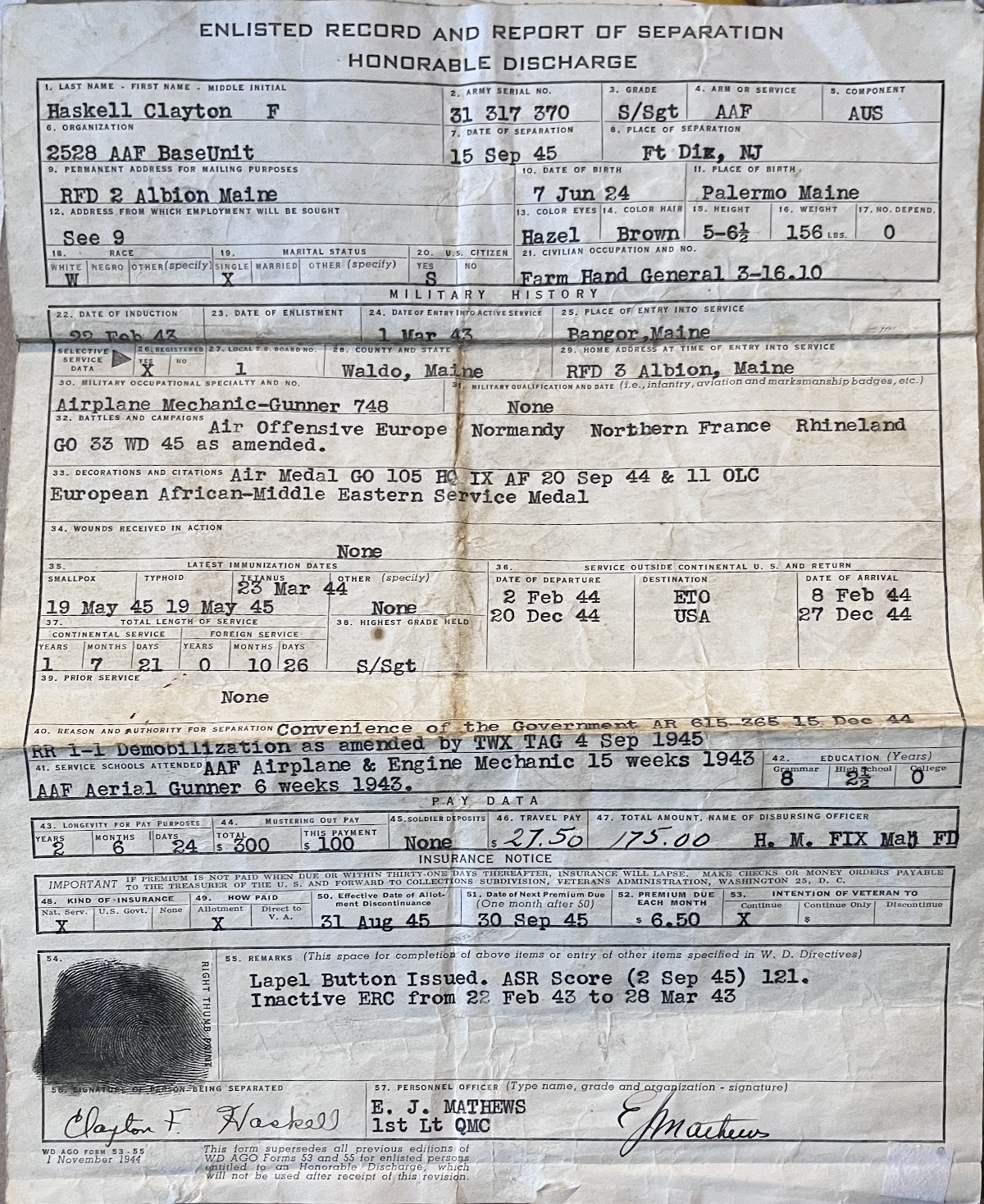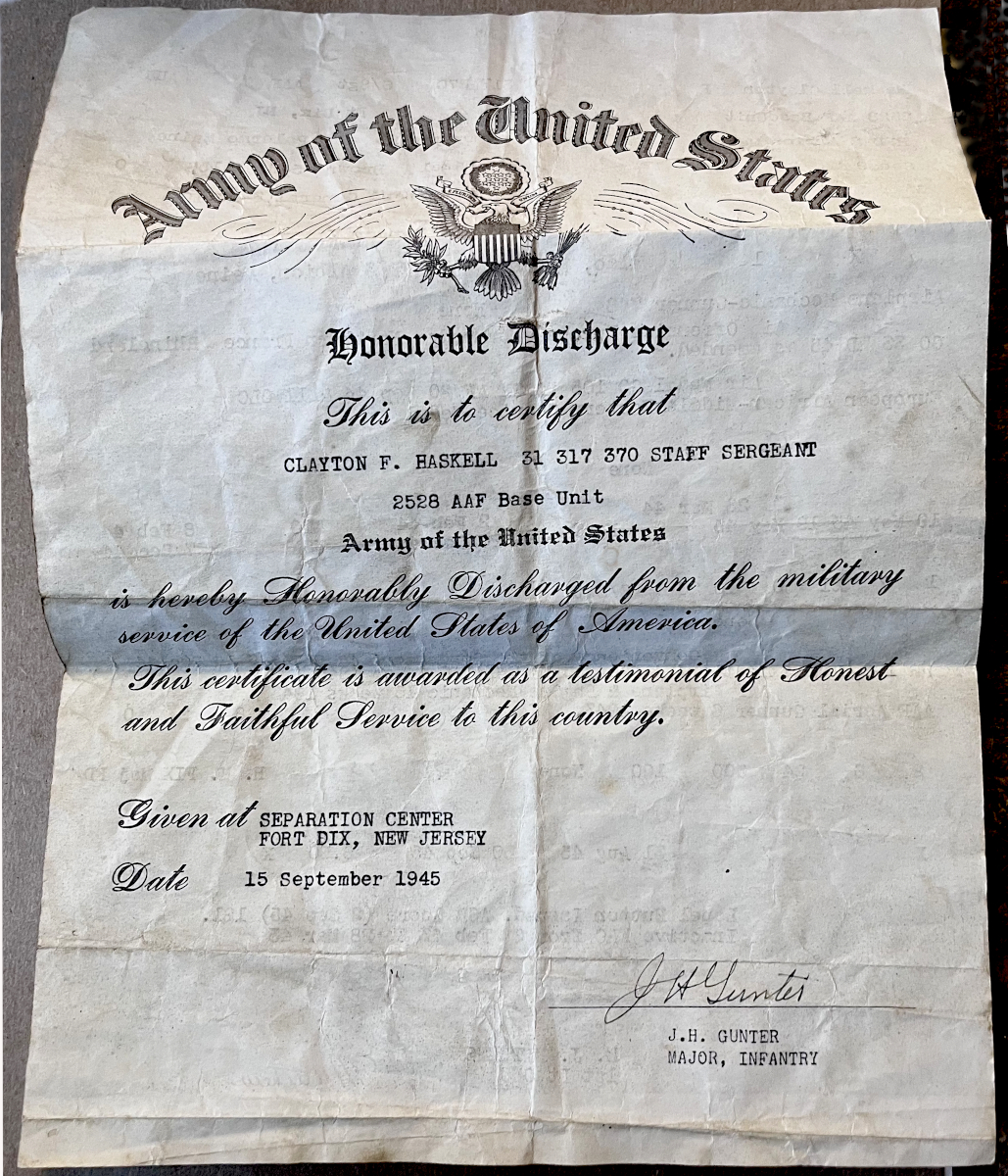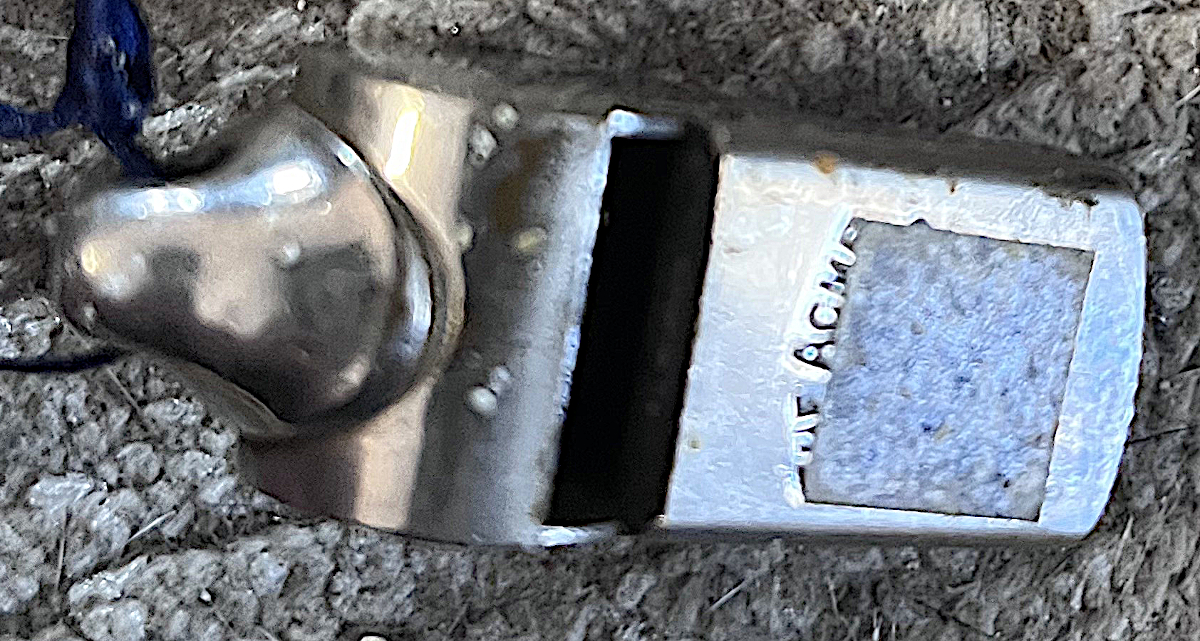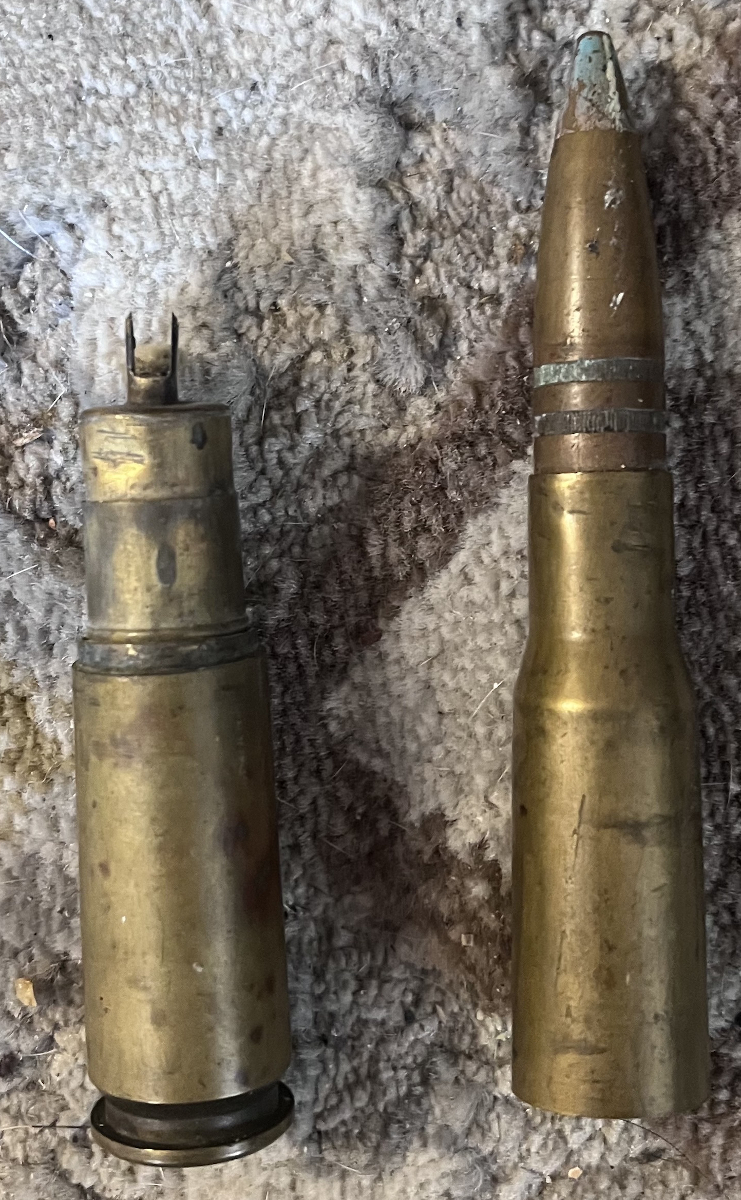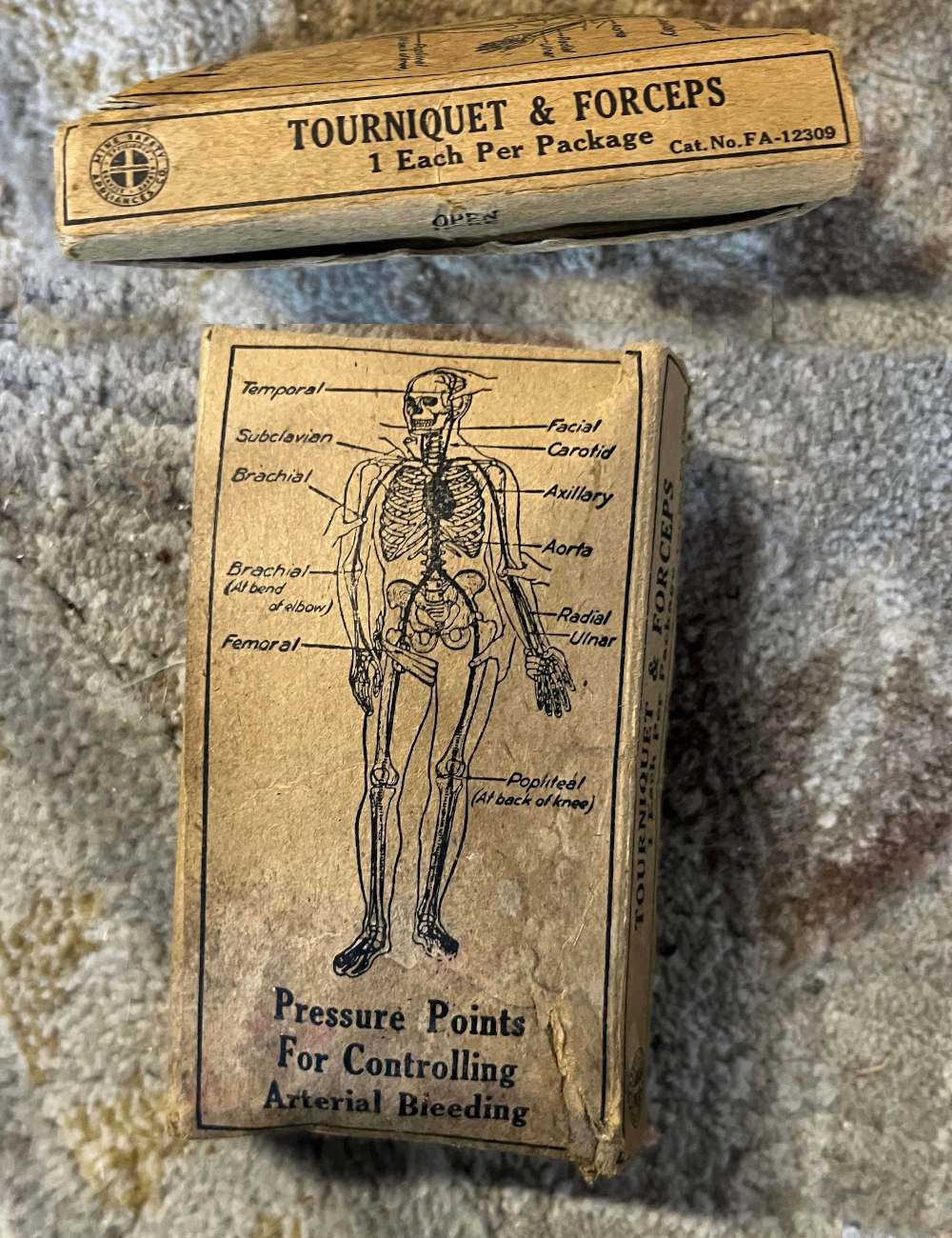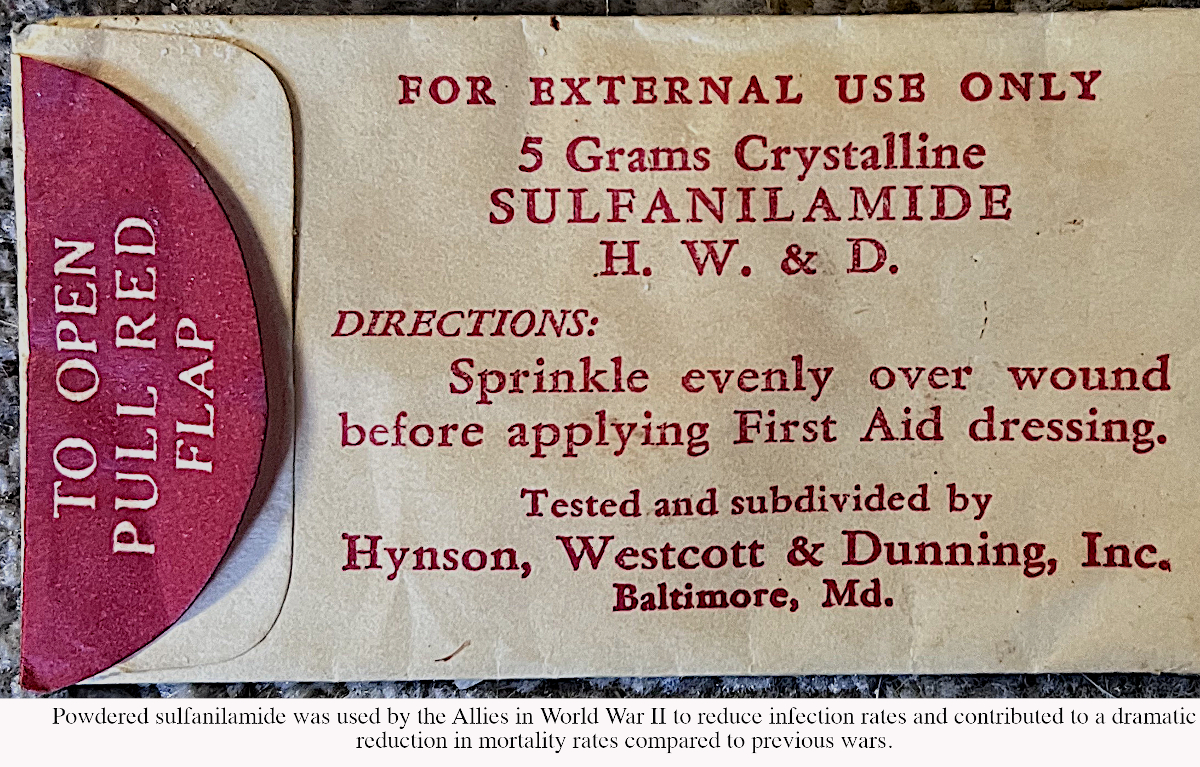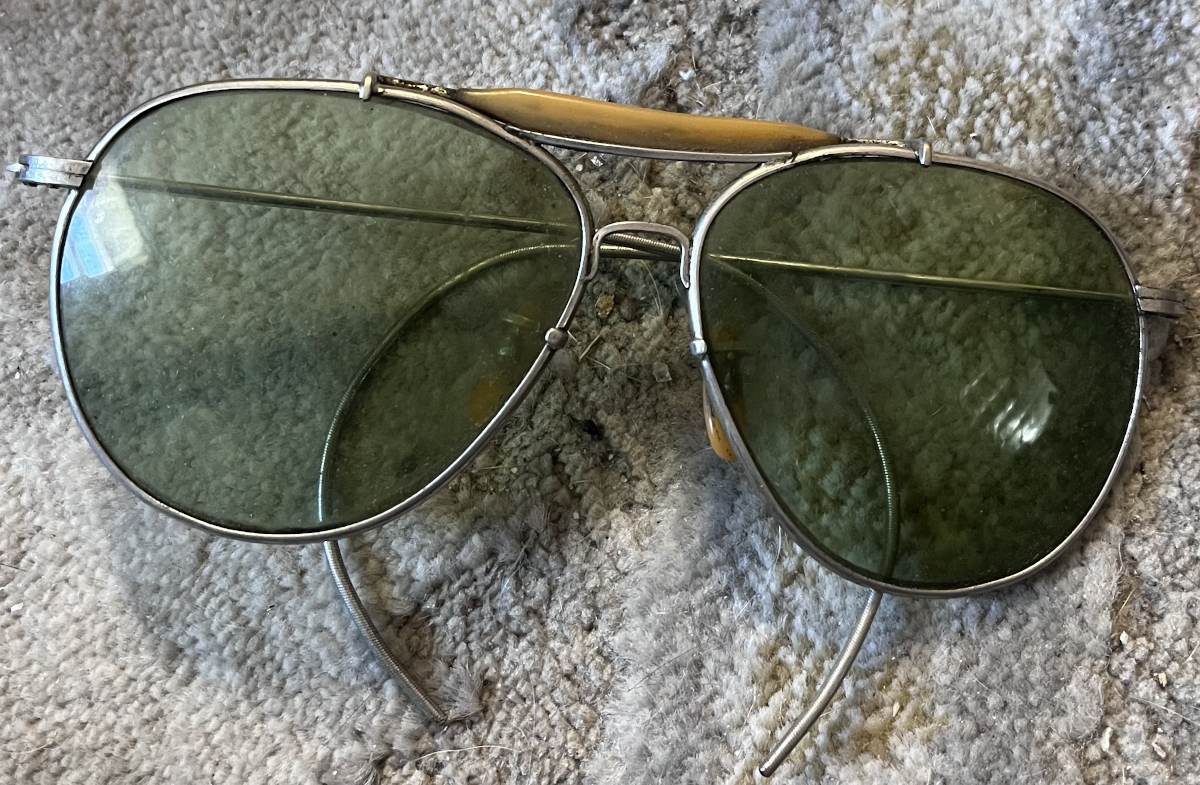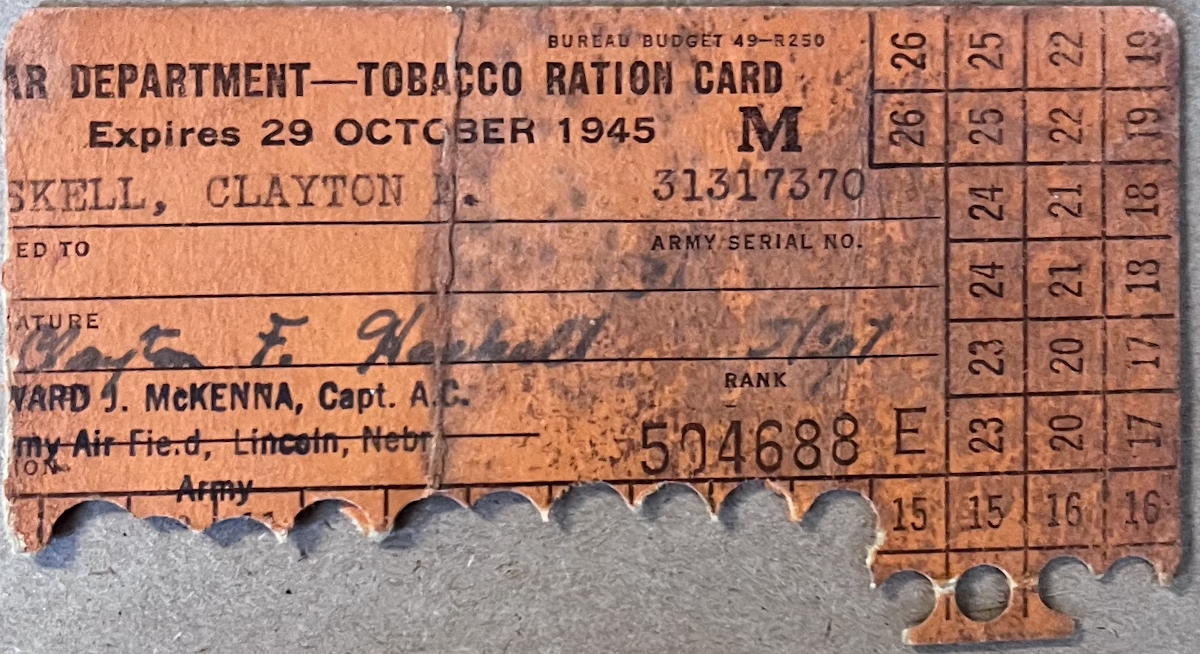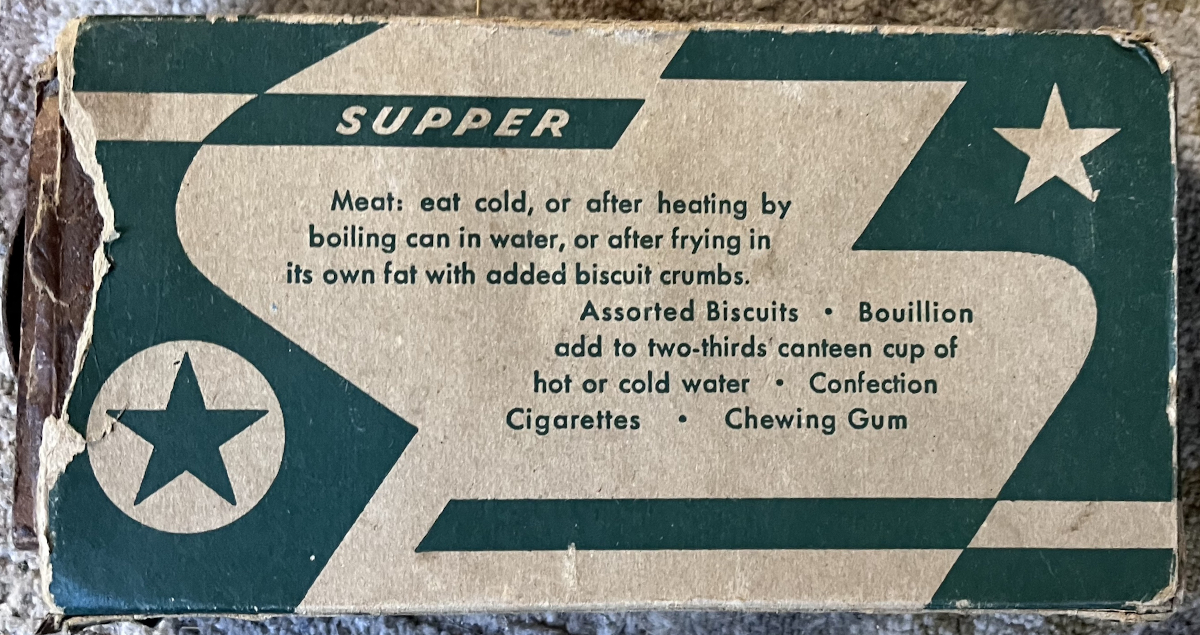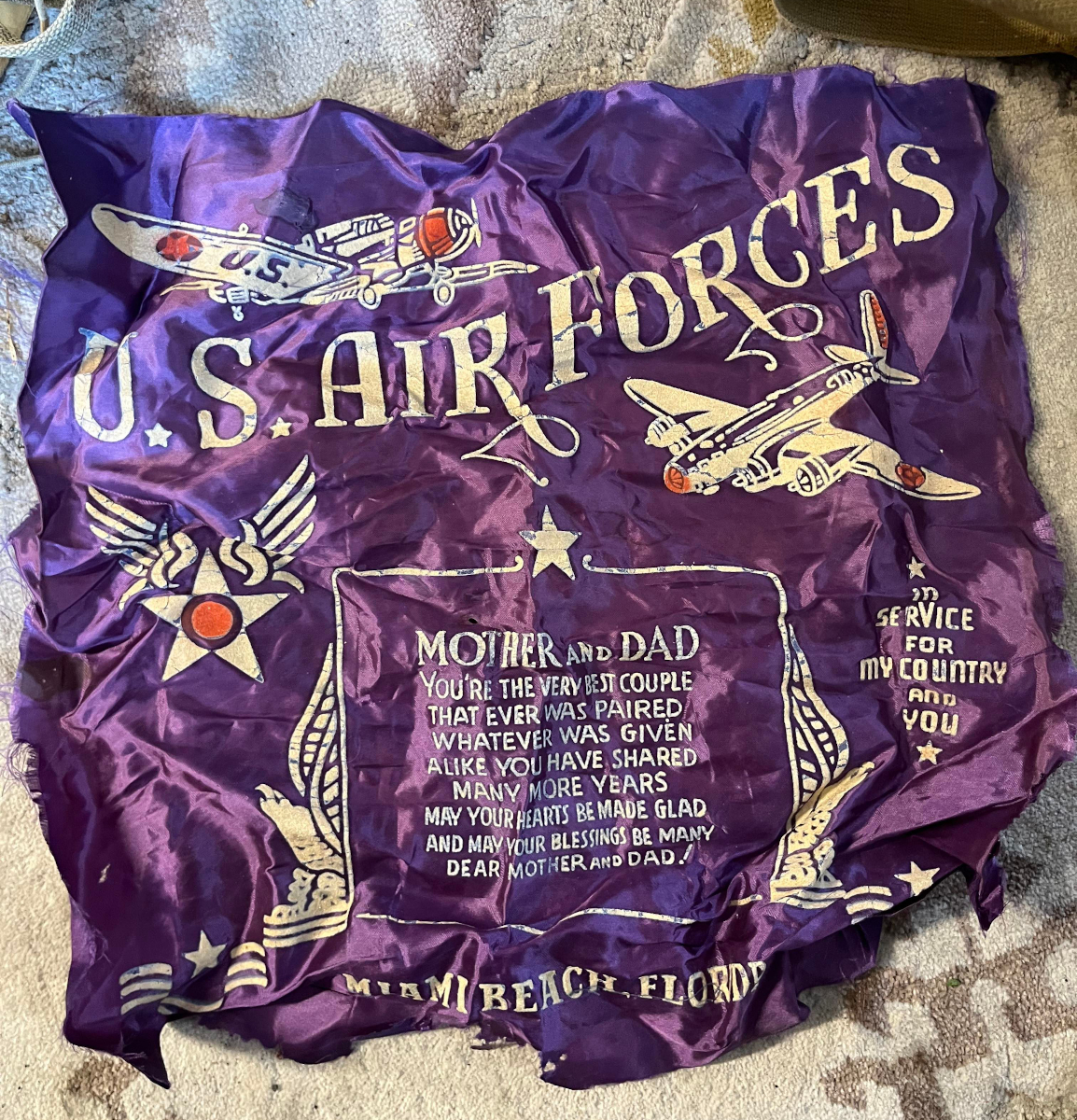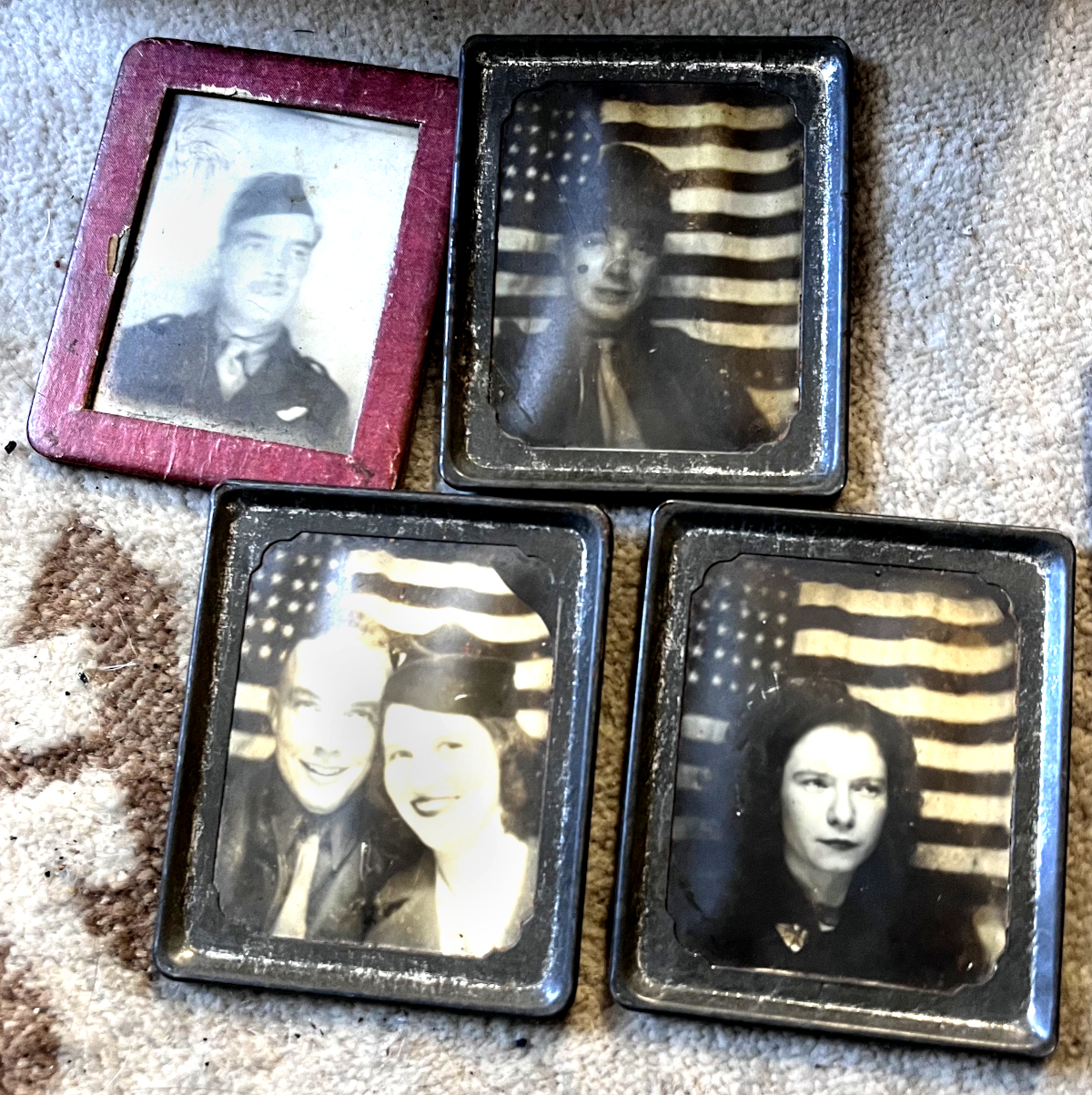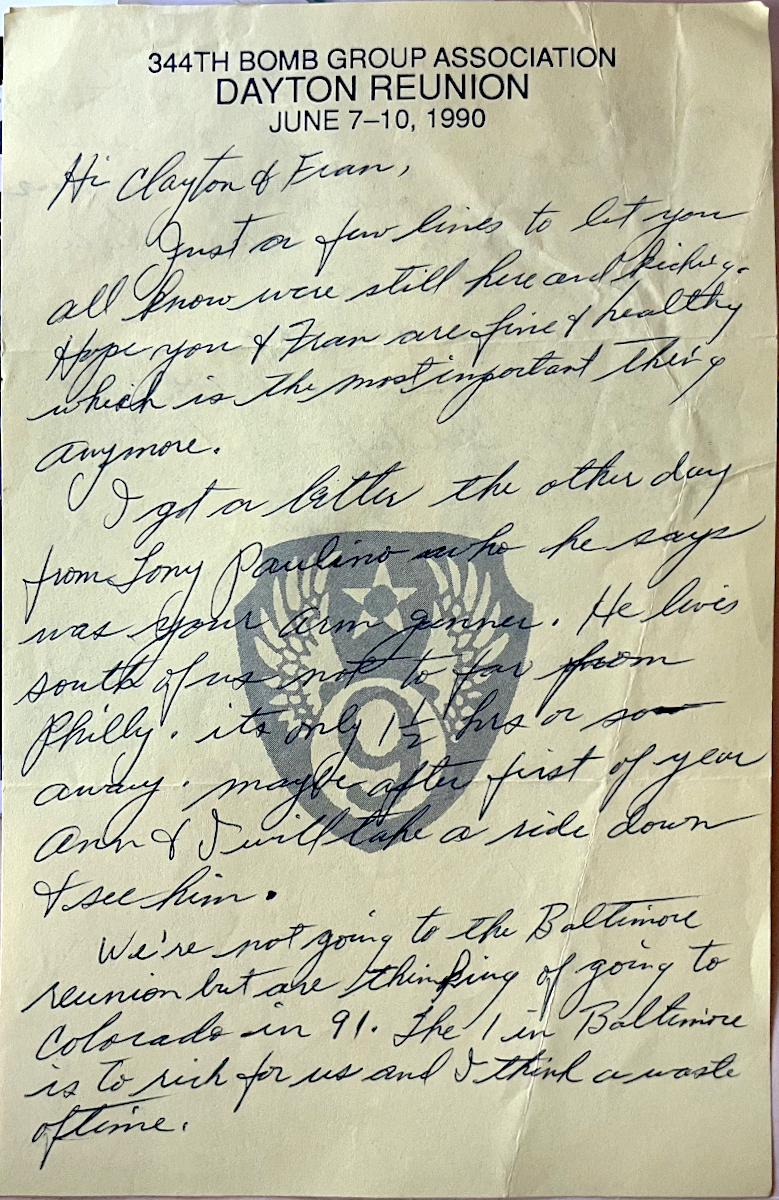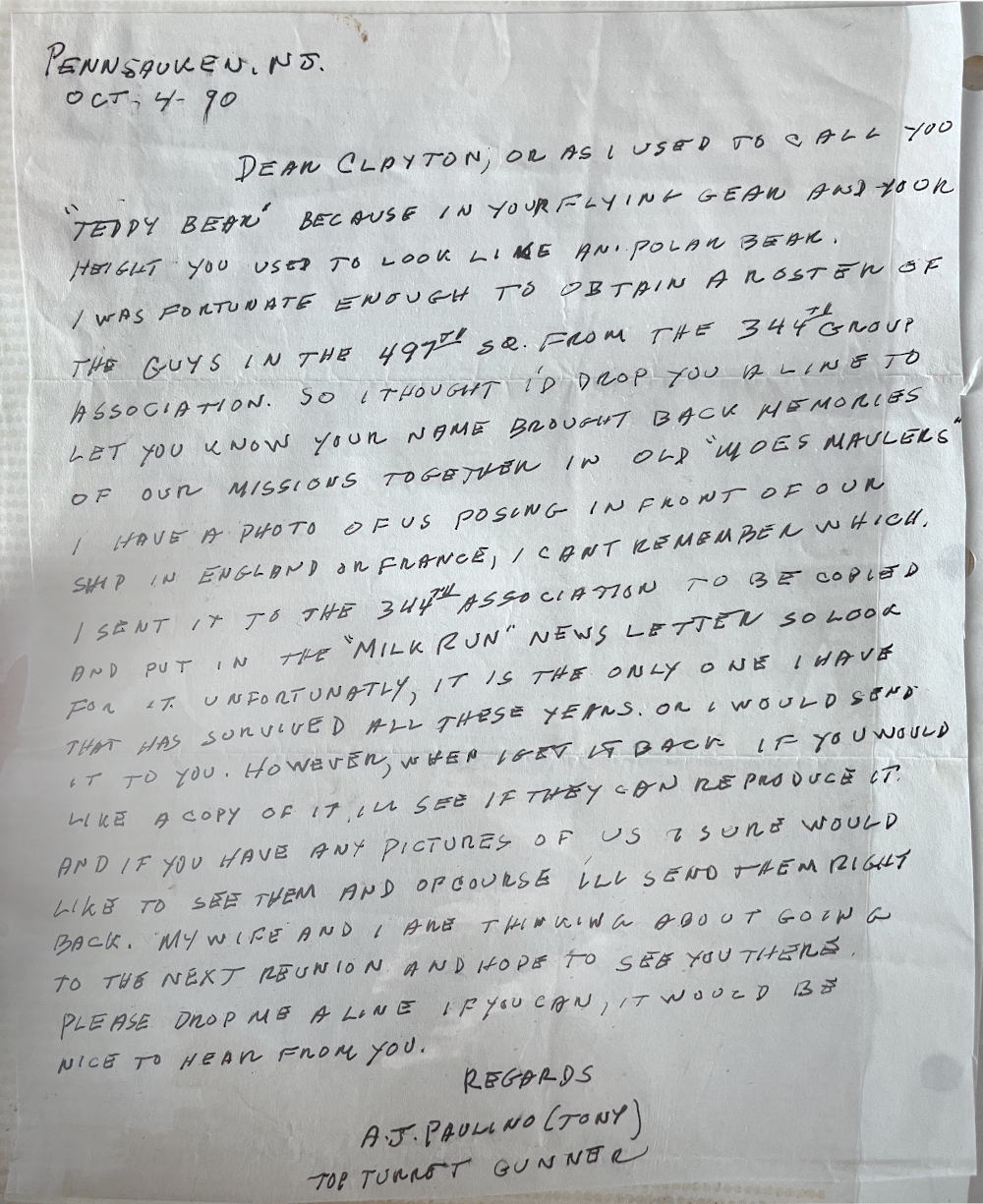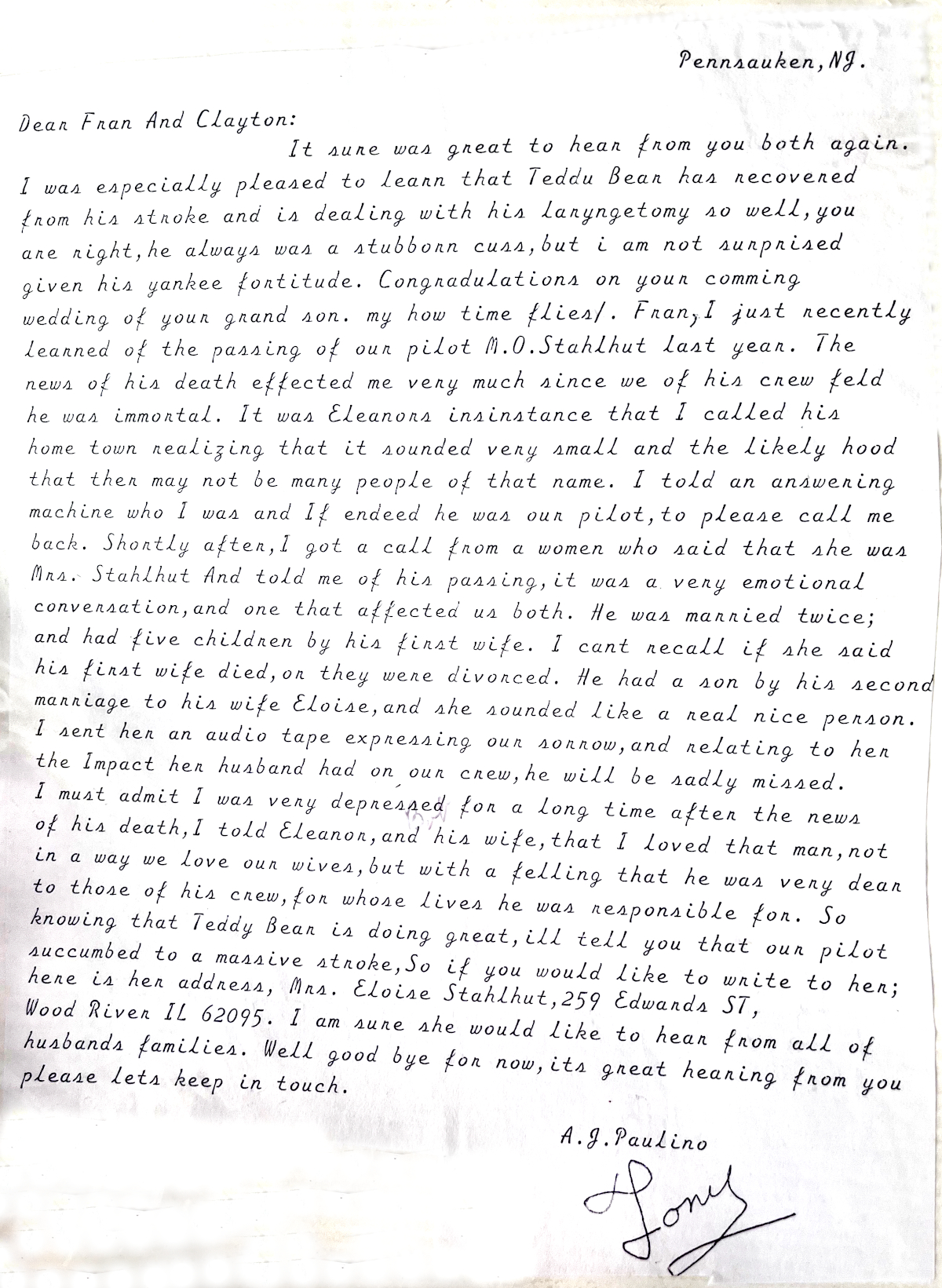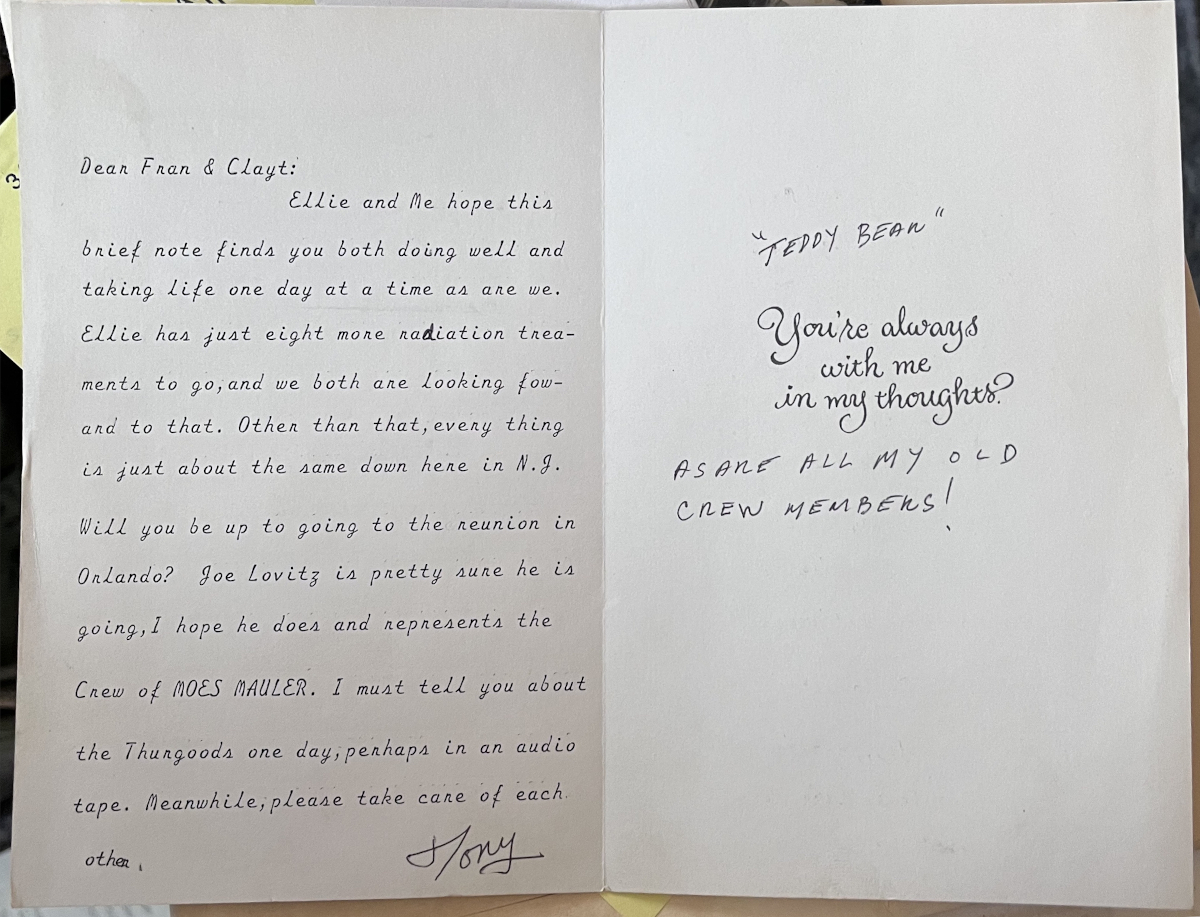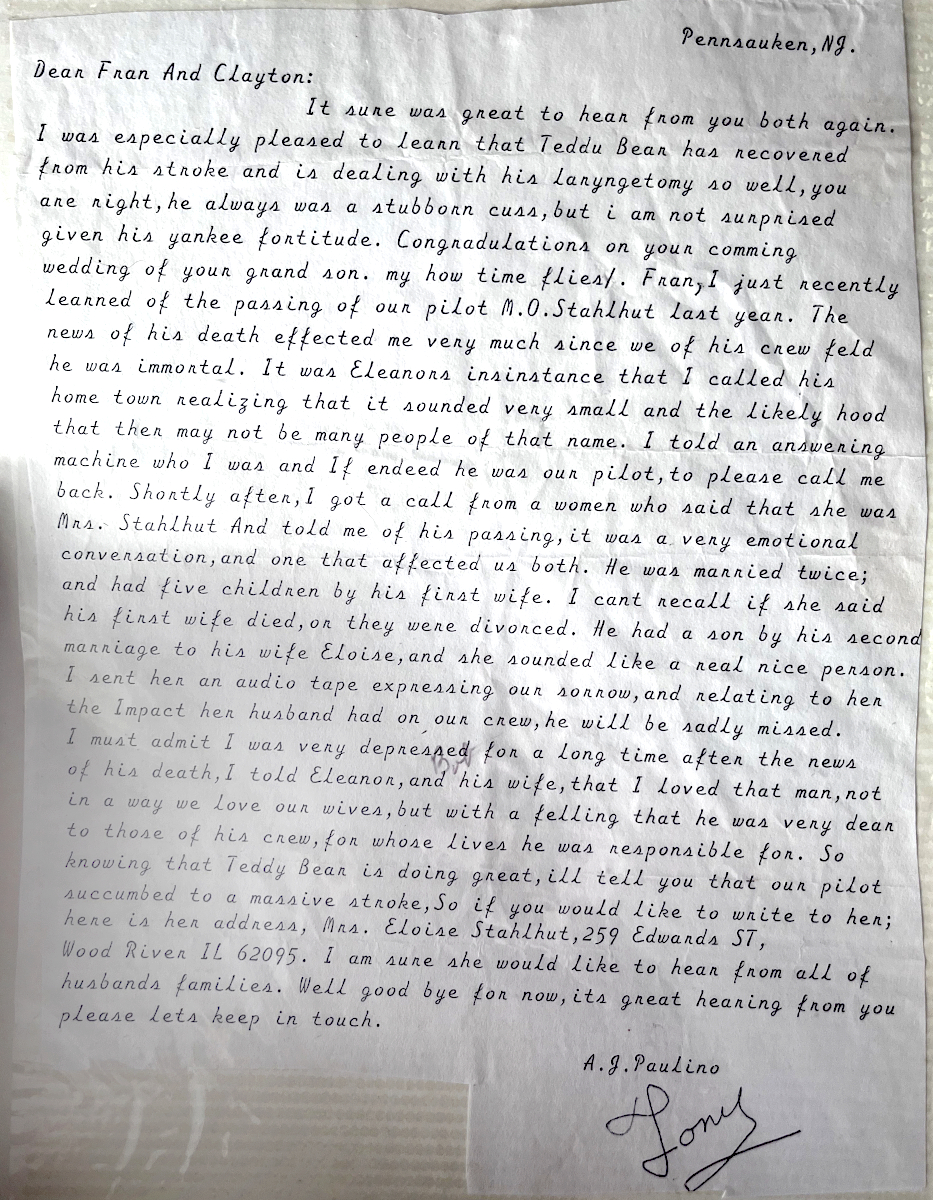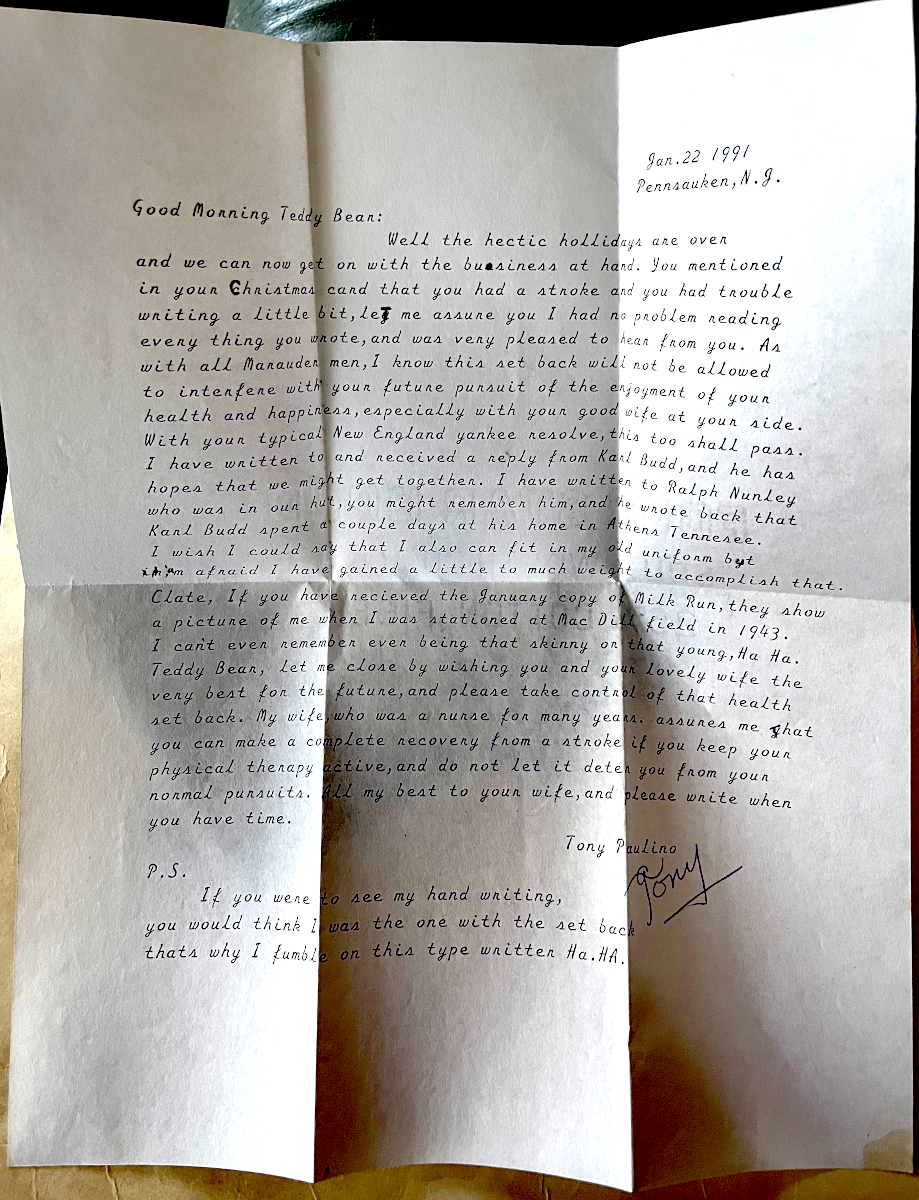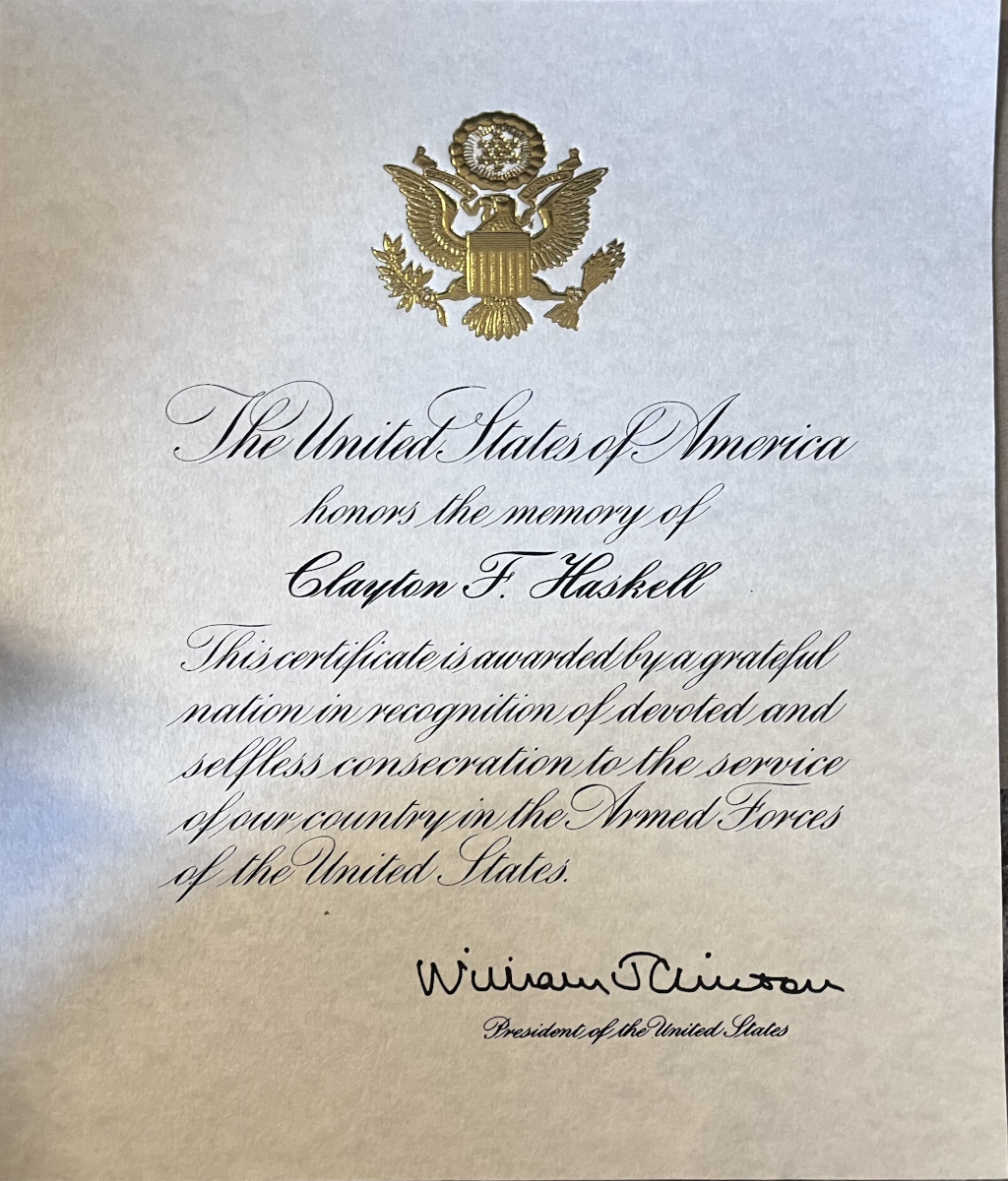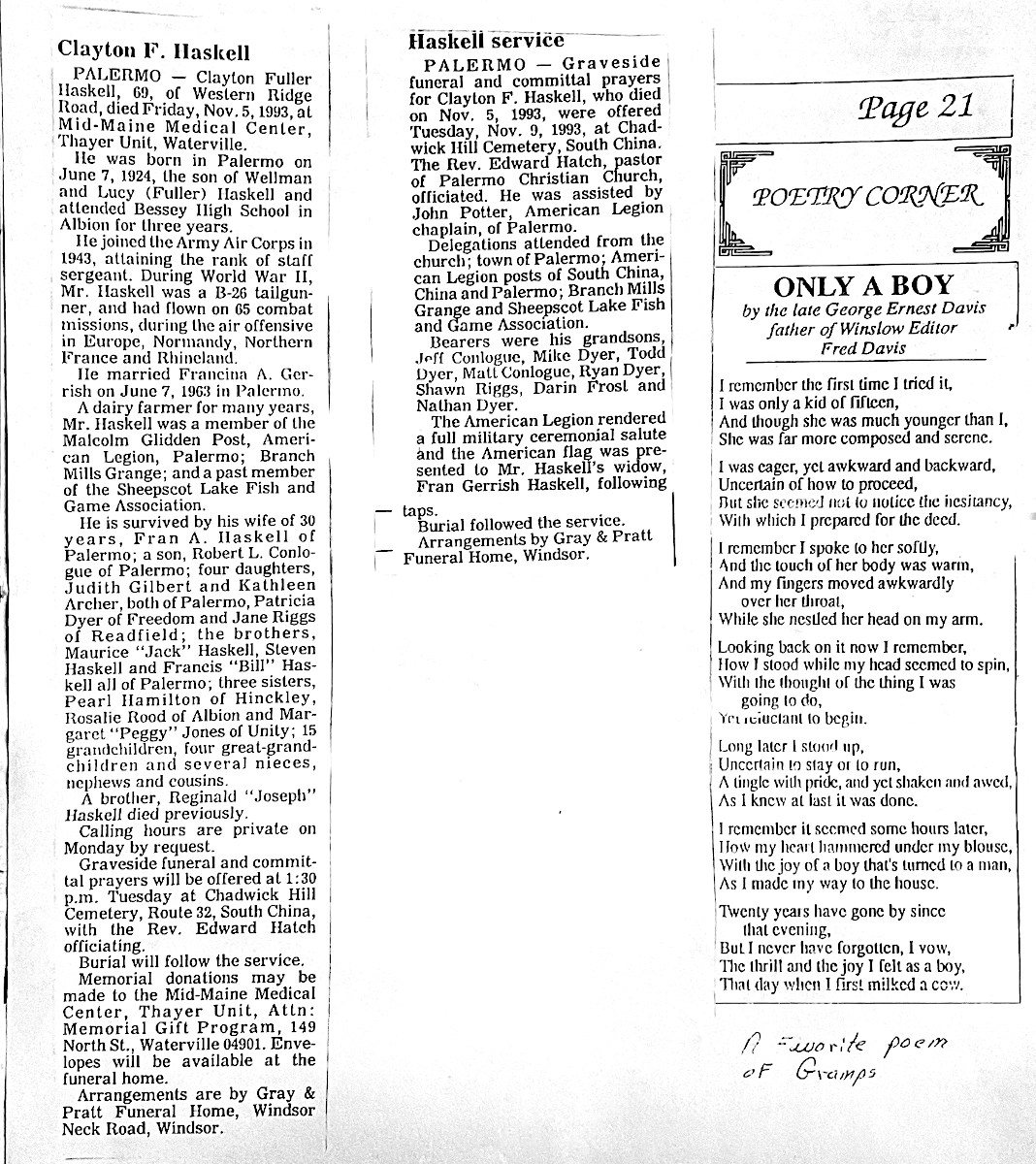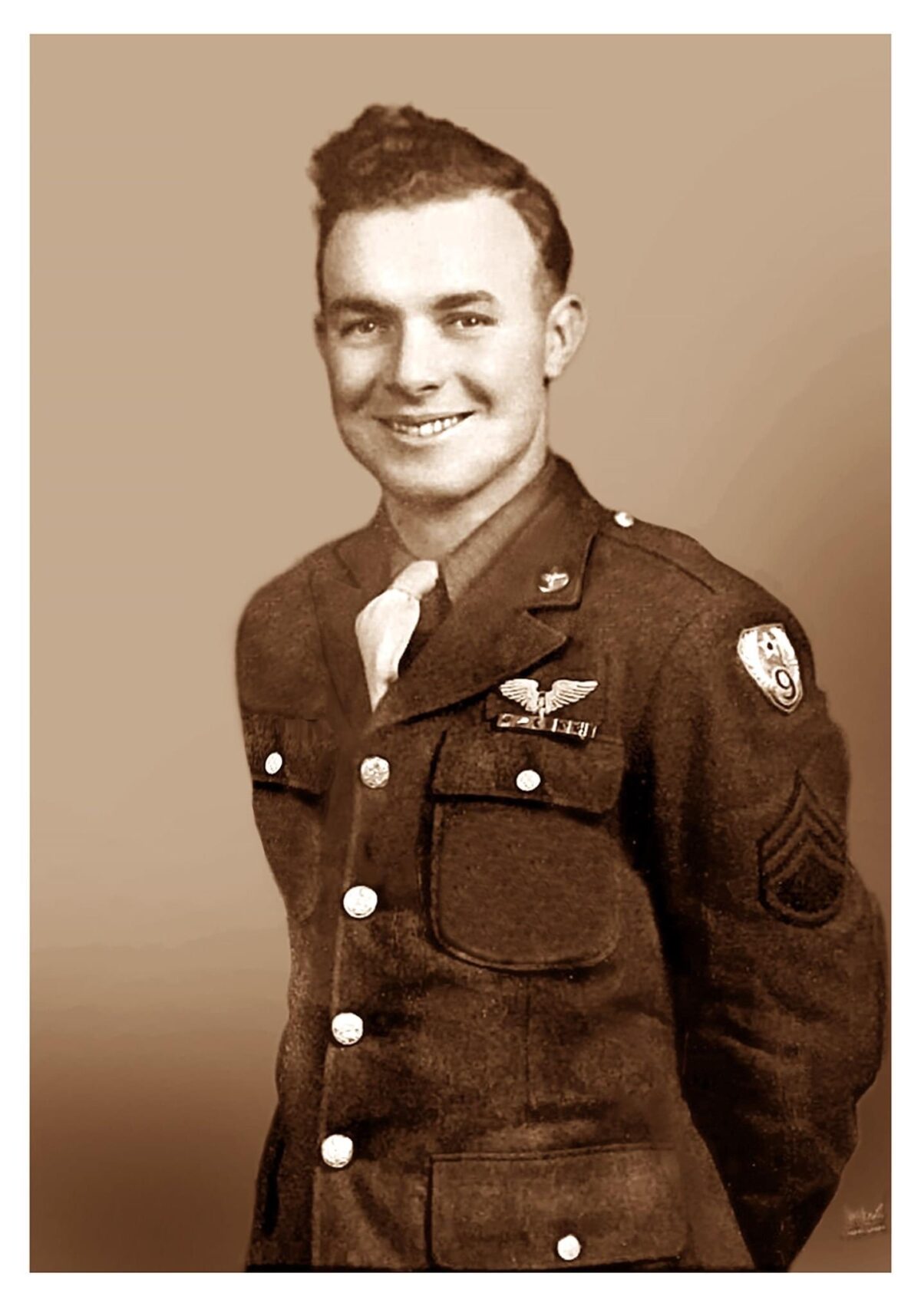S/Sgt. Clayton F. Haskell
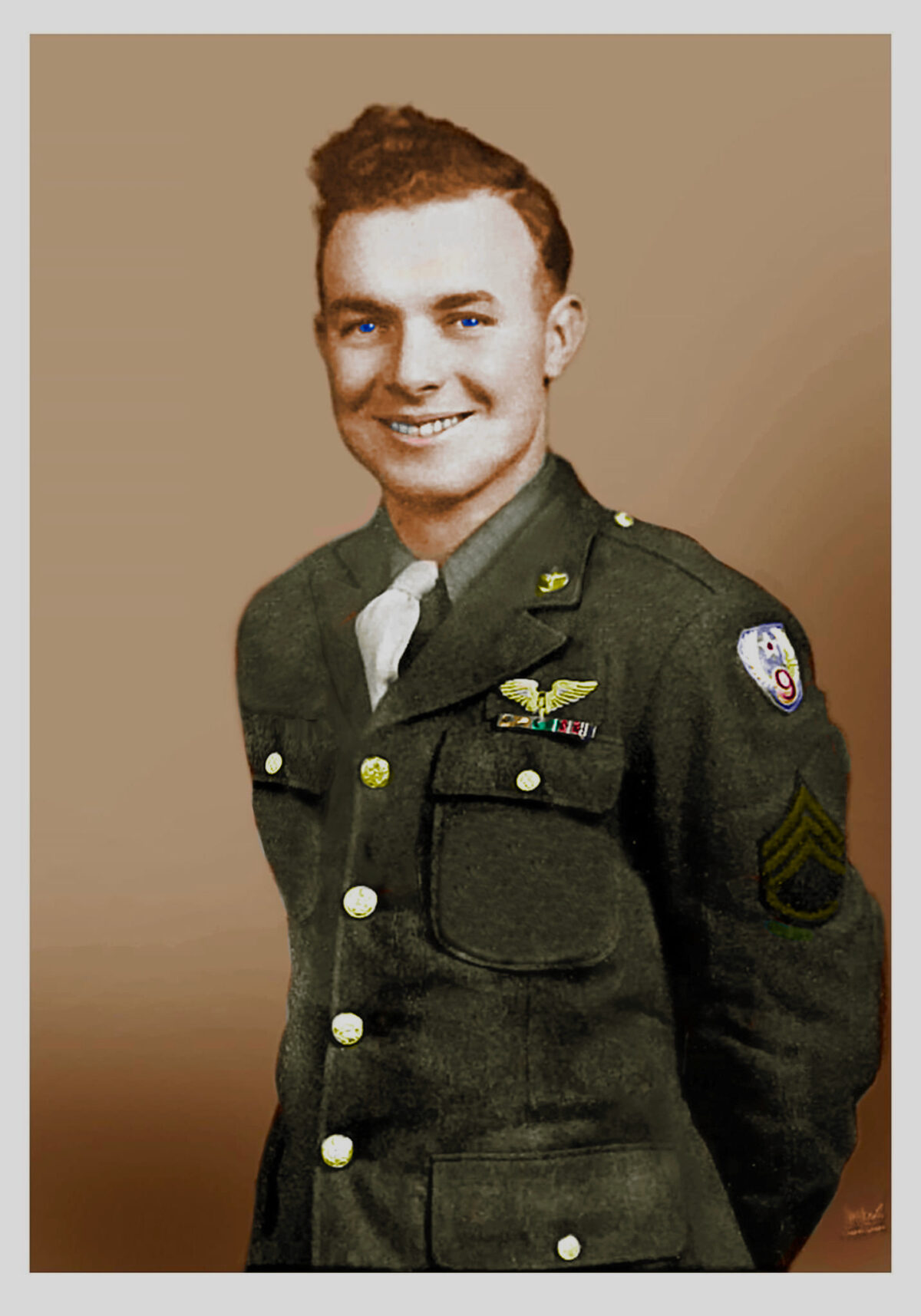
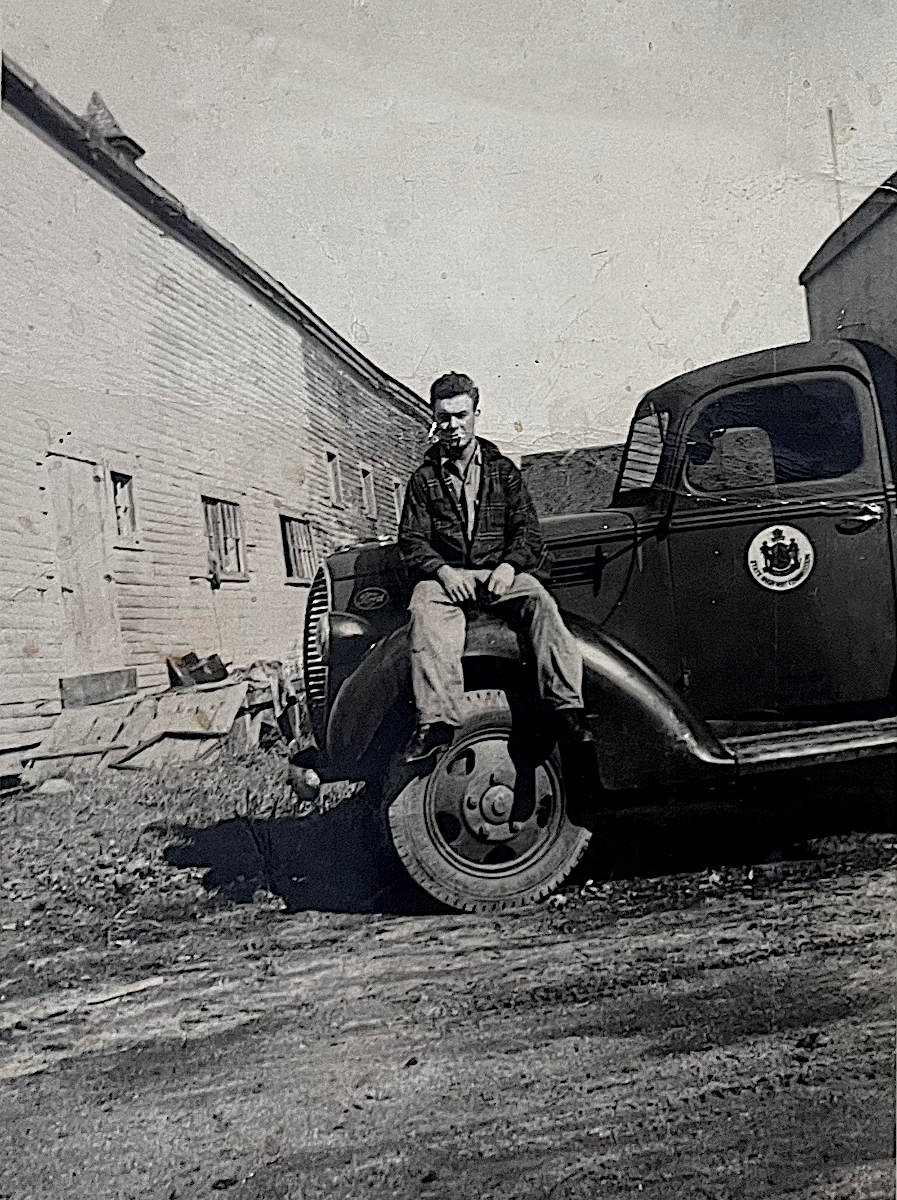
The 344th Bomb Group became operational March 6, 1944. Colonel Bentley led the bomb group on its first mission, which was to bomb a German-held
airdrome at Bernay St. Martin, France. Sgt. Haskell took part in this inaugural mission.
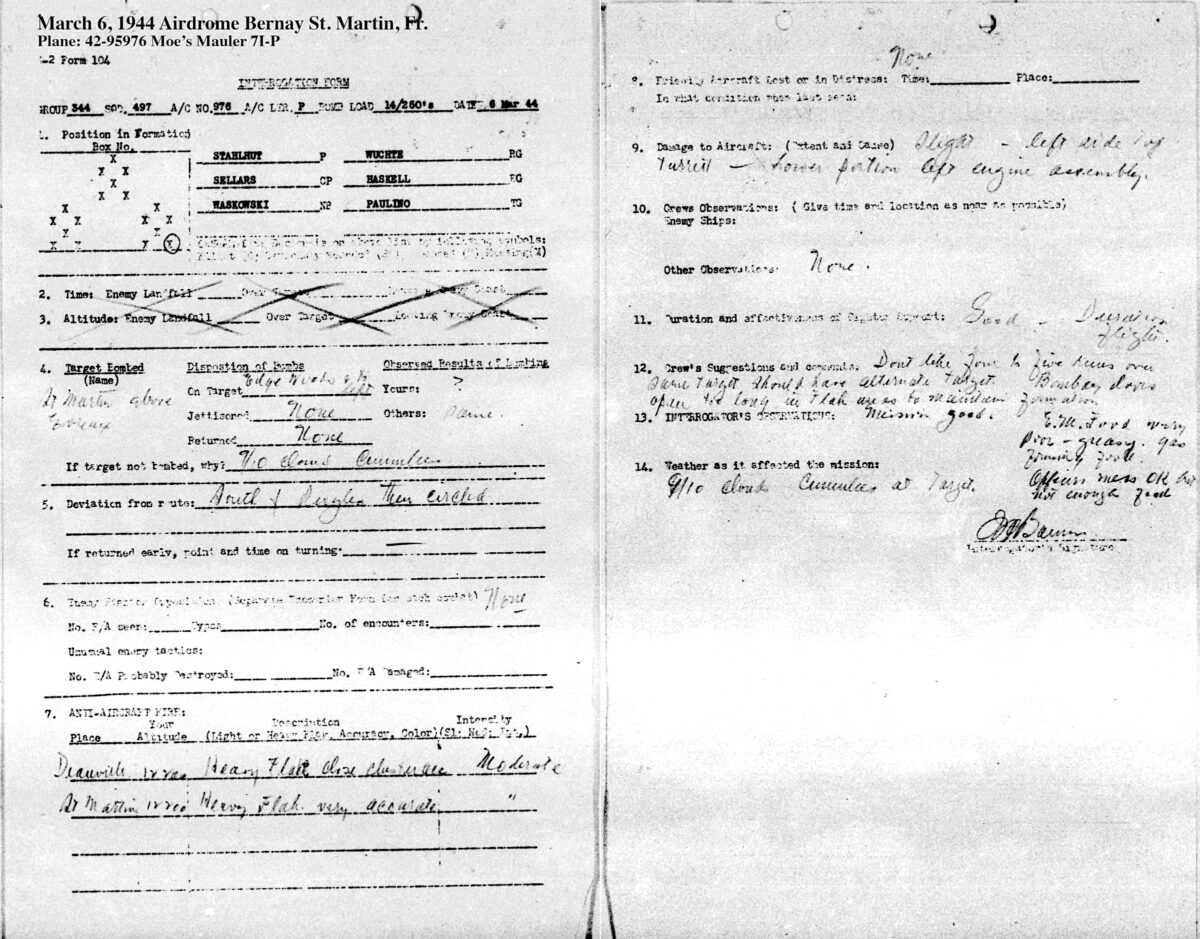
The plane used that day was 42-95976 Moe’s Mauler 7I-P. Pilot- Lt. Melvin O Stahlhut, Co-pilot- Sellars, Navigator- Waskowski, Radio/Gunner- Wuchte, Engineer/Gunner- Haskell, Tail Gunner- Paulino. They carried a bomb load of 14- 250lb bombs. They made enemy landfall at 12:27 pm (alt. 11,500 ft) and were over the target at 1:08 pm (alt. 11,400 ft) finally leaving the enemy coast at 1:19 pm.(alt. 11,500 ft). According to Bentley the RR tracks were hit. Stahlhut was not sure as the sky was 9/10 overcast with cumulus clouds. He also claimed to experience heavy and accurate anti-aircraft flak.
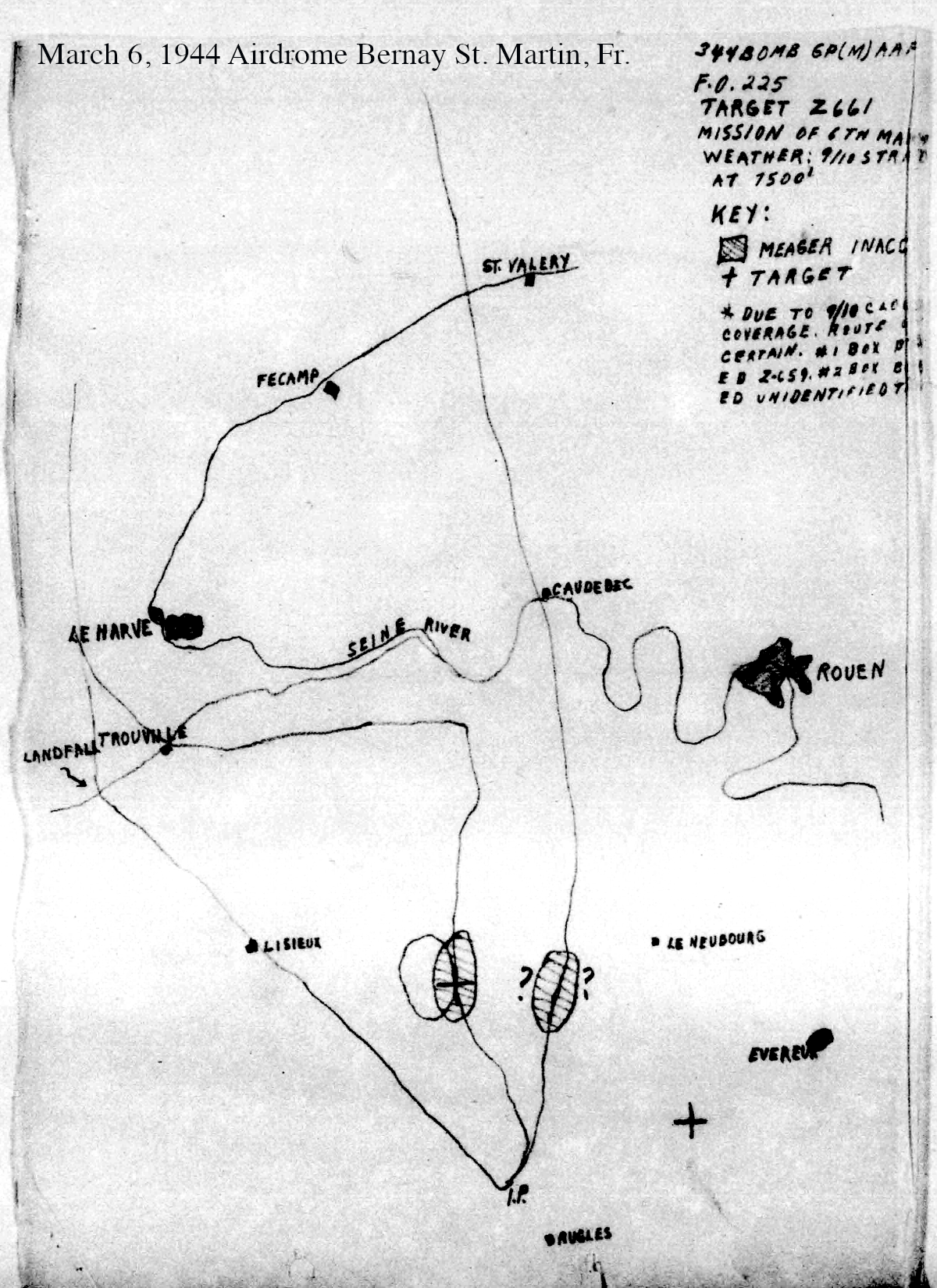
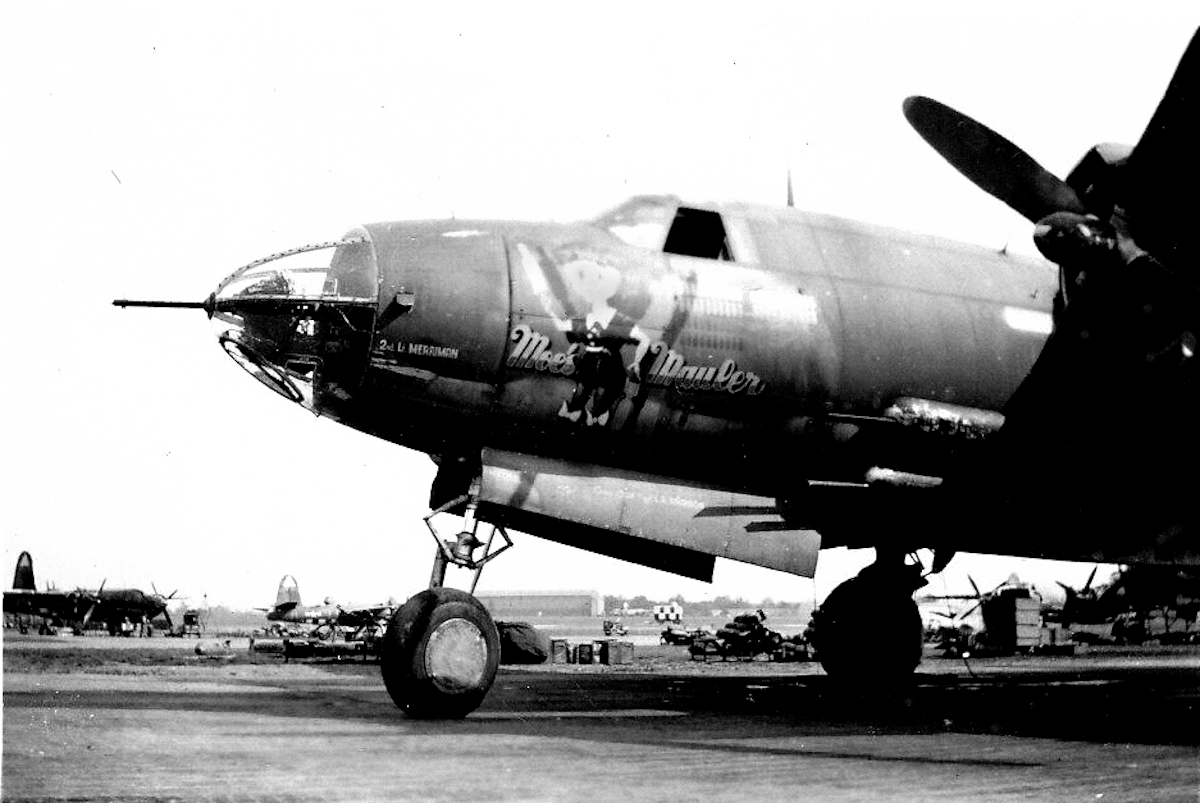
The Group had a lull in combat operations due to weather conditions over the Continent which precluded pinpoint bombing of enemy installations until March 19, 1944. That day thirty-seven planes were dispatched to
Bois De Huit Rue, to destroy a “Noball” (V-1 “Buzz Bombs”) construction site. This site was small in area and located well in a wooded area. It proved to be a difficult target to pick up and recognize. The 344th bomb group dropped 256 X 500-pound bombs in the general area of the target with poor results, but some damage was accomplished.
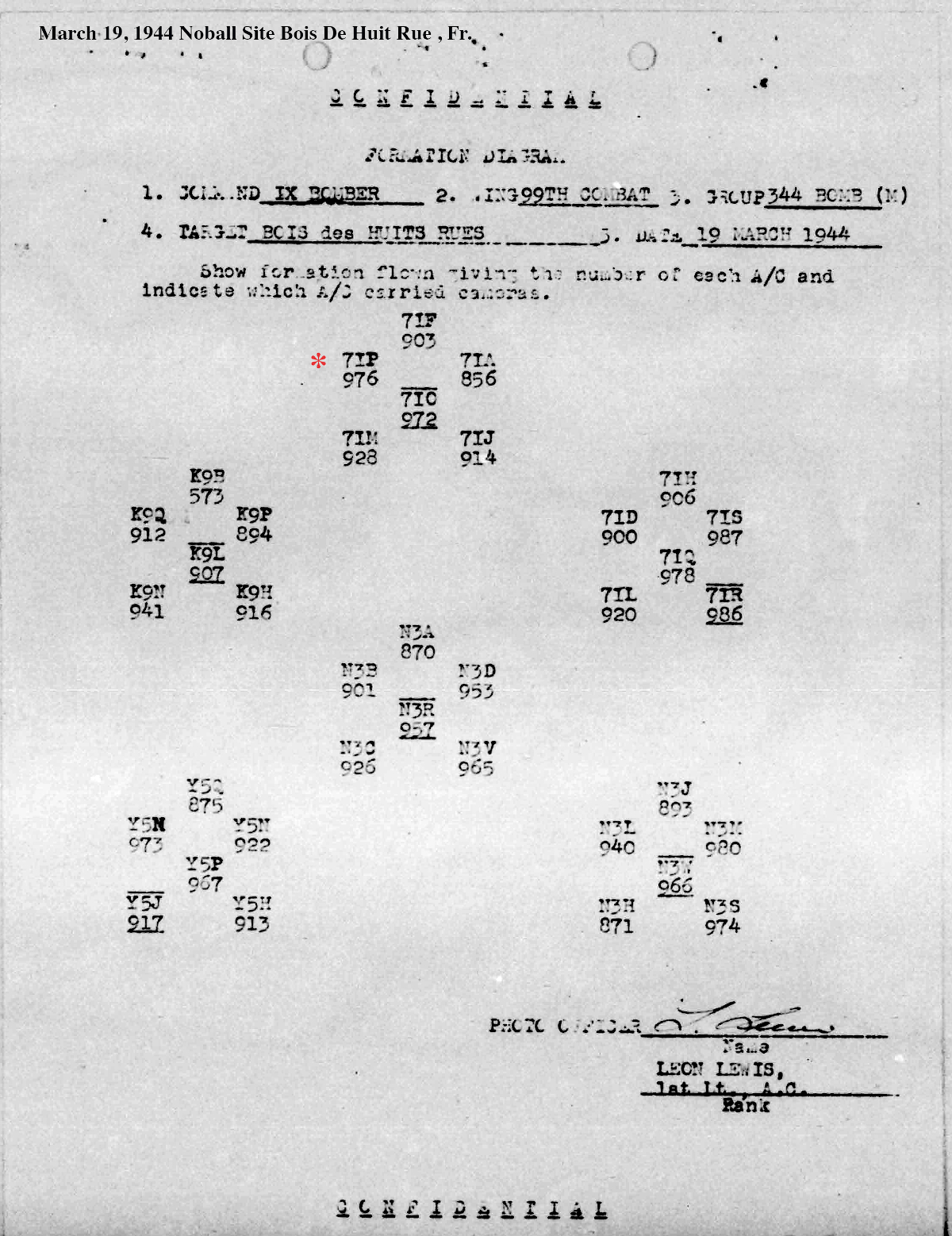
Haskell, Stahlhut and crew flew in formation position 1-1-3. The plane used that day was again 42-95976 Moe’s Mauler 7I-P. The lead plane was piloted by Bentley and Vance in 42-95903 Hard To Get 7I-F.
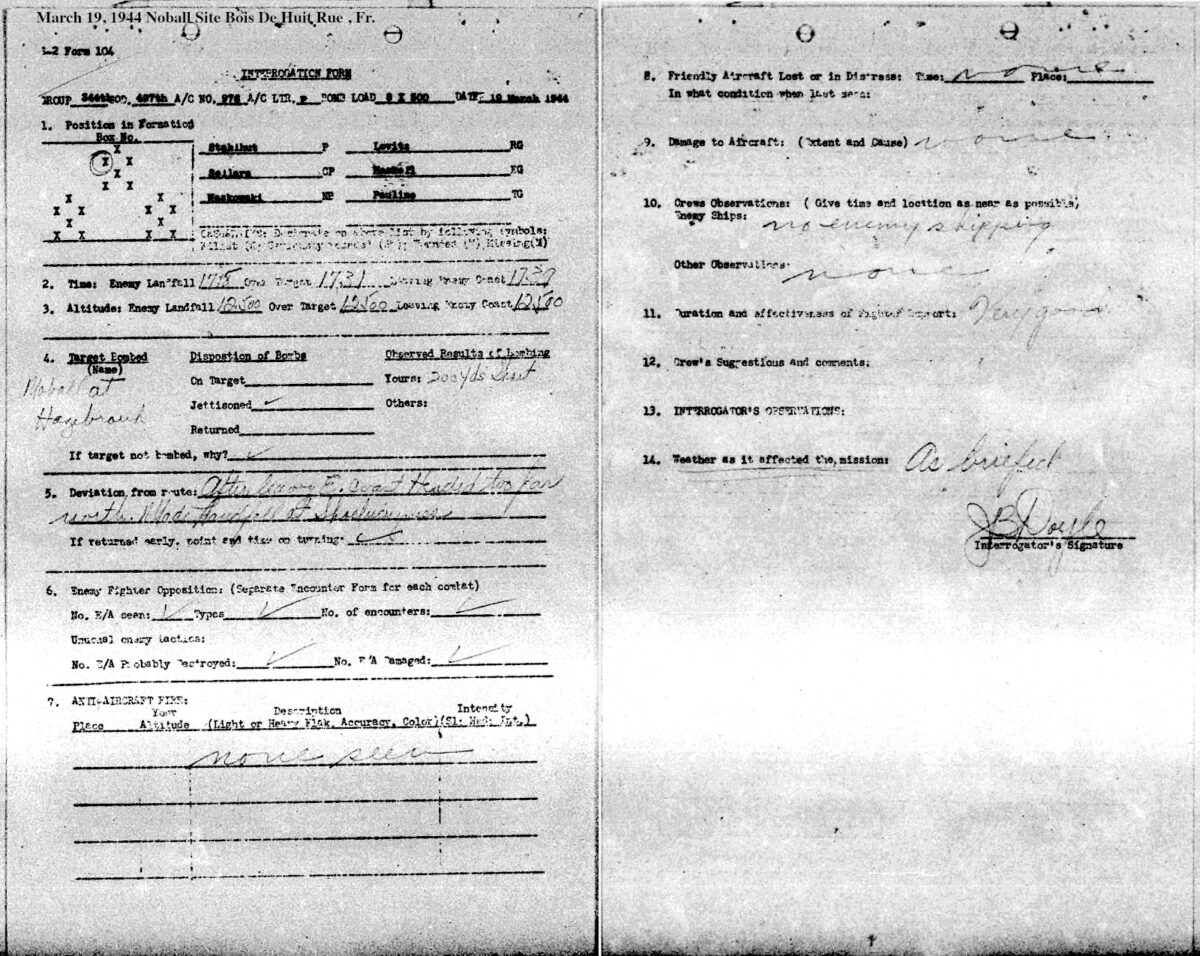
The crew consisted of; Pilot- Lt. Melvin O Stahlhut, Co-pilot- Sellars, Navigator- Waskowski, Radio/Gunner- Lovitz, Engineer/Gunner- Haskell, Tail Gunner- Paulino. They carried a bomb load of 8- 500lb bombs. They made enemy landfall at 5:18 pm (alt. 12,500 ft) and were over the target at 2:31 pm (alt. 12,500 ft) finally leaving the enemy coast at 5:37 pm.(alt. 12,500 ft). According to Stahlhut and Bentley the bombs fell short of the target. The formation experienced no flak or enemy fighters.
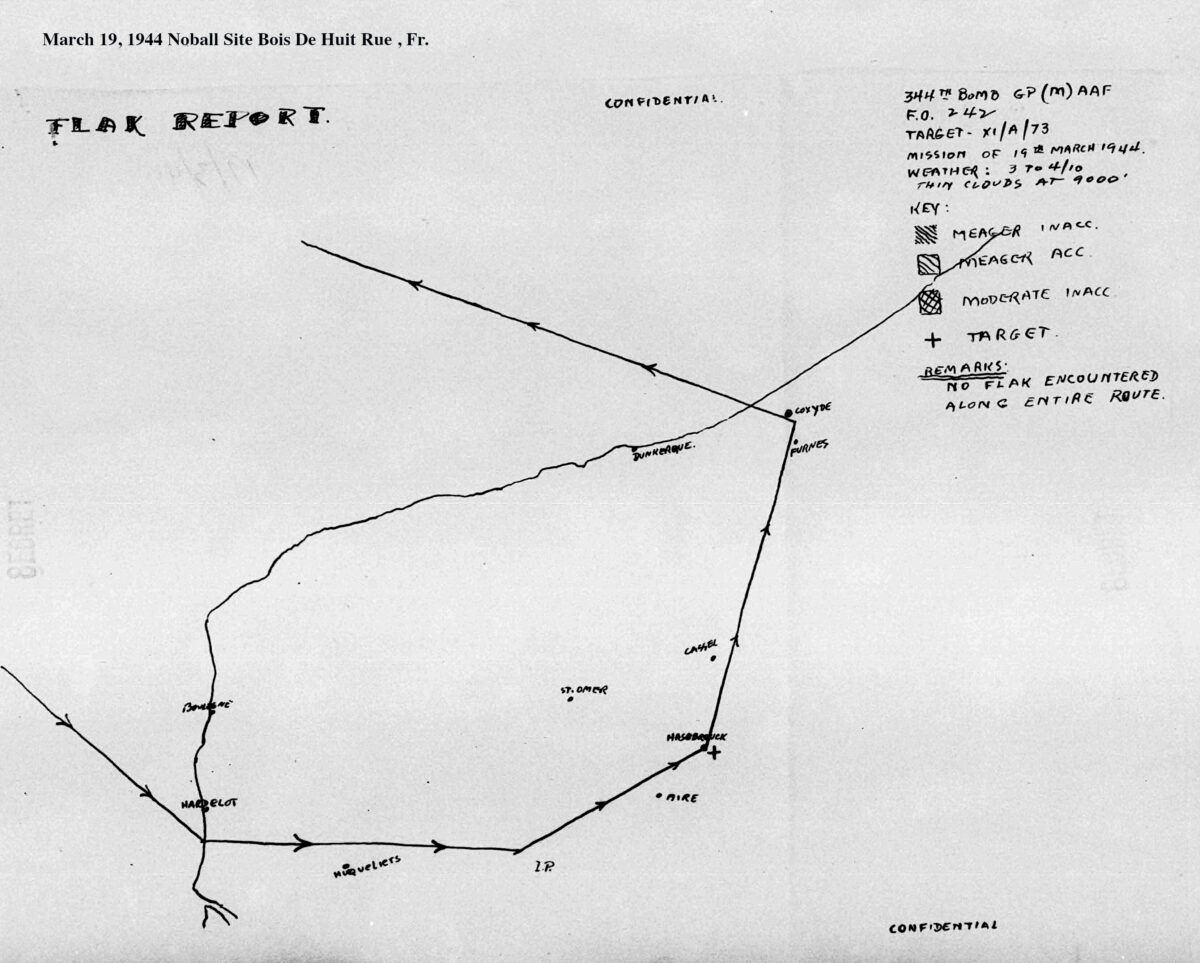
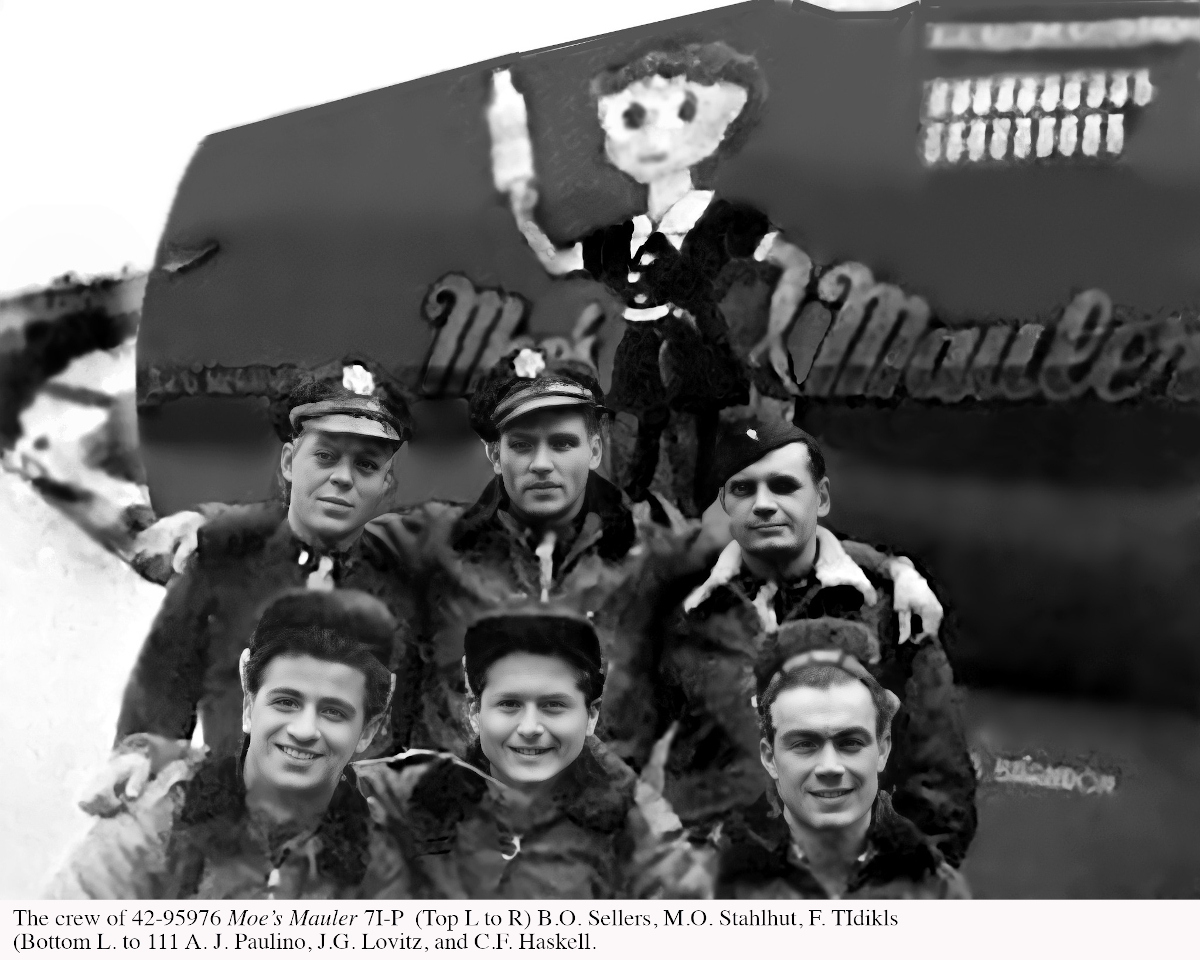
Sgt. Haskell and crew earned the distinction of taking part in the D-Day invasion as the 344th Bomb Group was the first to attack that day. The success of the Marauder groups helped keep the number of casualties down to just 197 killed or wounded. Tail gunner A.J. Paulino remembered D-Day;
“On the early morning of D-Day – approximately 1 o’clock in the morning – we were summoned for a briefing. I thought it was kind of strange because it was still completely dark out and we didn’t usually fly in early dawn hours. Our missions usually were at day-break. At the briefing we were told about our target and what was going on. That was when we first became aware of the fact that this indeed was D-Day and we were going to be participants in one of the greatest assaults on Europe in the history of mankind.
When we got to our airplane parked on the hard stand, we were shocked to find that it had been painted with black and white stripes on the wings and fuselage. We were told at the briefing that these were to help the ground forces and other friendly forces to identify us so that we would not be shot at.
As a young man coming from abject poverty in a little town called Germantown of immigrant parents, a high school drop out -by necessity – I had two brothers and on sister in the service. I was qualified to be deferred because I was working in defense factory. So to be there to be part of this was the greatest thrill of my life.
I never once thought of the danger. I always liked to fly. I wanted to be a pilot in the worst way, but with my limited education I knew that was not within reach. I was content to be a gunner on a B-26, the greatest airplane ever built, and to be a member of Merv Stahlhut’s crew, one of the greatest pilots who ever flew a B-26. To say that an occasion like that won’t remain with me for the rest of my life is foolish. It always will. I’ll always look back at it and wonder, how the heck circumstances brought me to that part of England, in that airplane on that day, is something I always marvel at and something I have never regretted.
Let’s not forget that I am speaking as a survivor of the D-Day episode and of my tour of duty in the European theater. We must remember that thousands of men on the ground and in the air never did return. For that, this country should always remember these men and what they did and sacrificed. I will always remember them.
To return to the base after D-Day and look down and see those men on the beaches knowing that they had to continue to fight on through that fire; whereas I would be returning to base, get a nice warm meal, and go to bed that night on a nice comfortable cot with clean sheets often bothered me. The fact that we flew two missions a day on D-Day was probably the only consolation I had to relieve myself of the guilt of not being down there with them going through what they had to face.”
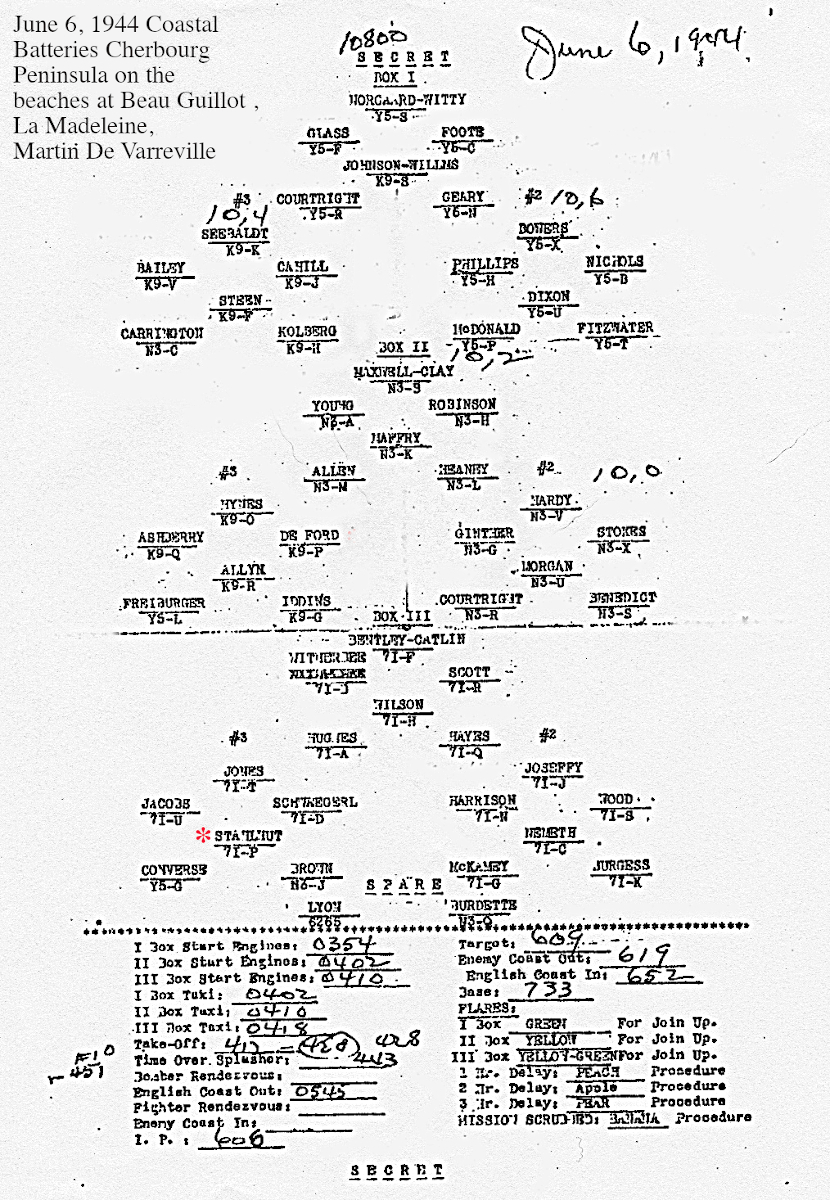
Haskell, Stahlhut and crew flew in formation position 3-3-4. The plane used that day was 42-95976 Moe’s Mauler 7I-P. The lead plane was piloted by Norgaard and Witty in 42-95876 Mary Jo Y5-S .
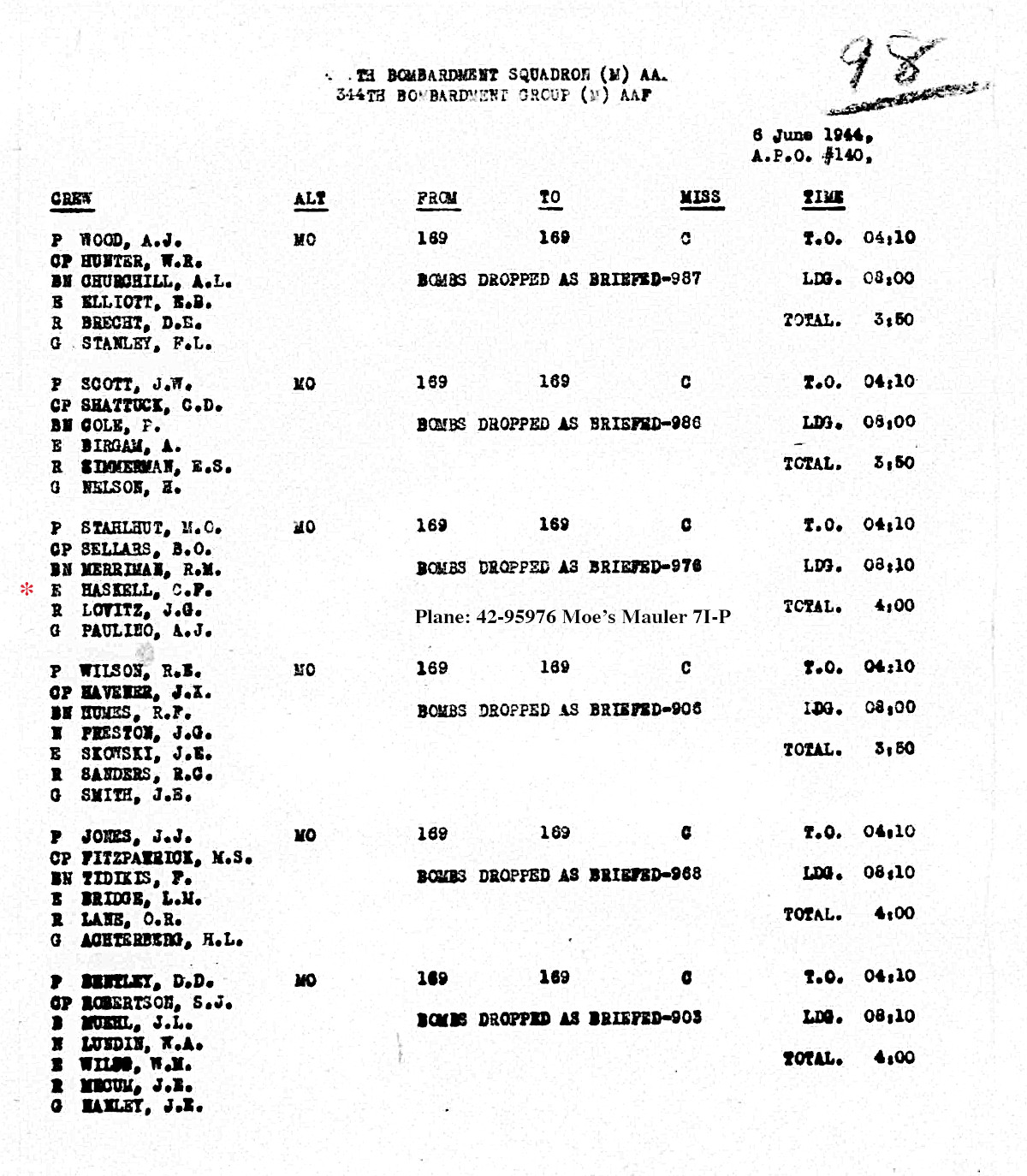
The crew consisted of; Pilot- Lt. Melvin O Stahlhut, Co-pilot- Sellars, Bombardier/Navigator- Merriman, Radio/Gunner- Lovitz, Engineer/Gunner- Haskell, Tail Gunner- Paulino. They took off at 4:10 am in 42-95976 Moe’s Mauler 7I-P and landed at 8:10 am. The bombs were dropped as briefed.
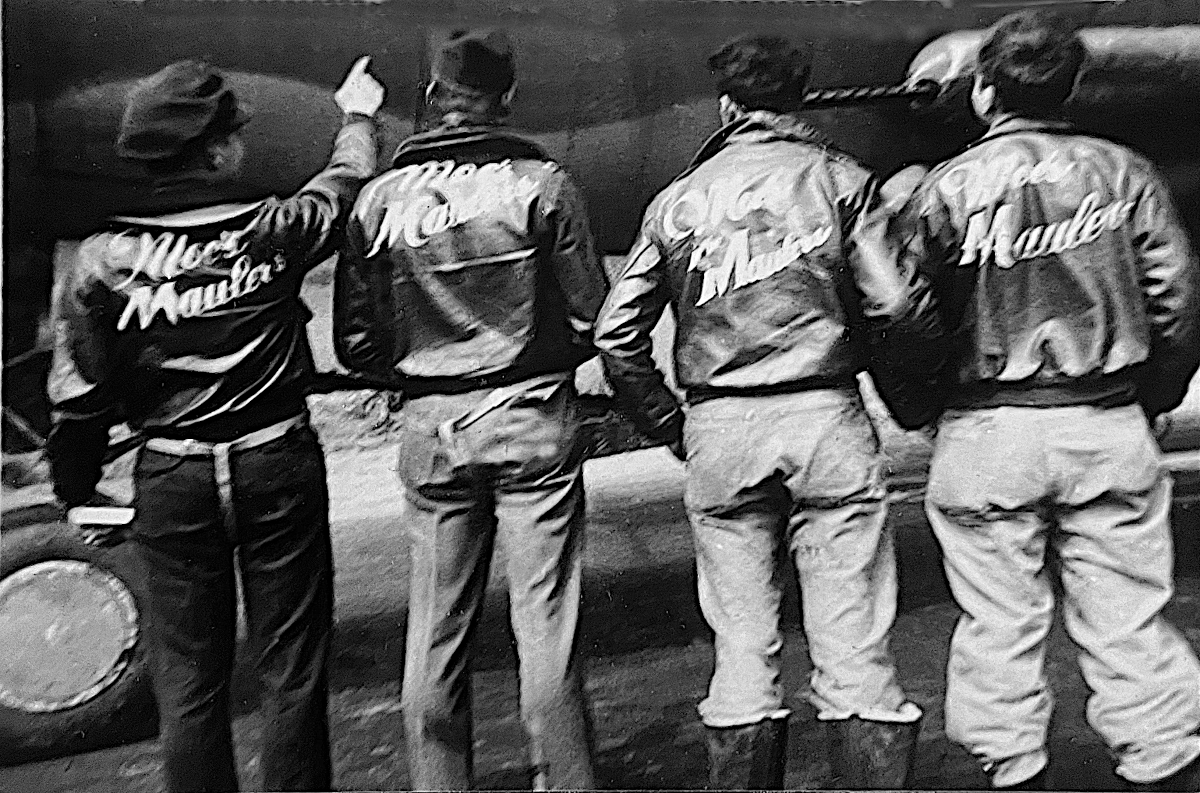
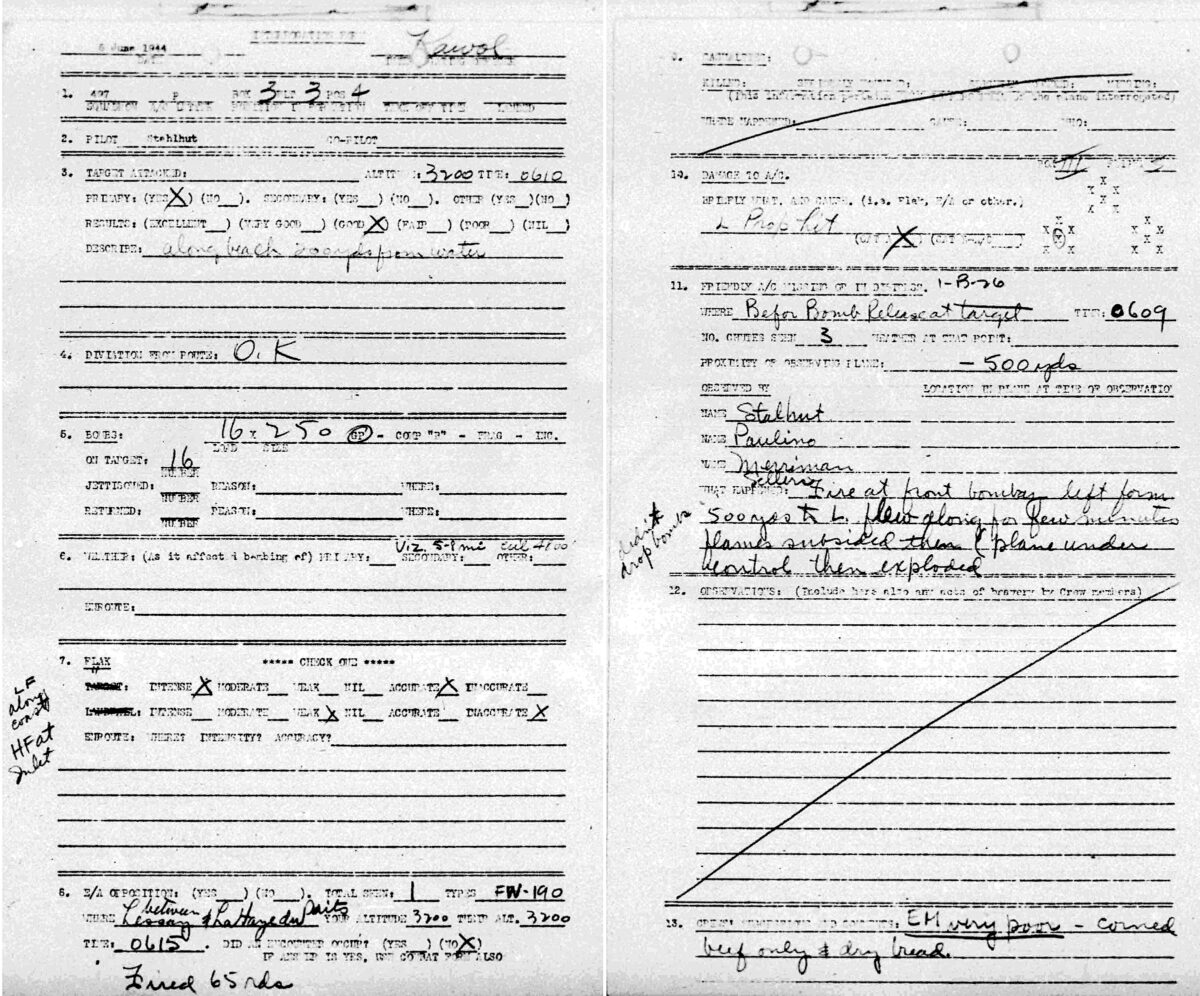
They carried a bomb load of 16- 250lb bombs. One of the objectives was to create lots of foxholes on the beach for the soldiers upon landing. They were over the target at 6:10 am (alt. 3,200 ft). According to Stahlhut all sixteen bombs fell on target. The formation experienced light and inaccurate flak along the coast and heavy accurate flak at the inlet. At 6:15 they fired 65 rounds at an FW-190 enemy fighters. This occurred at 3,200 ft between LaHaye and Lessay, France. The number 2 propeller was hit by flak. the plane received category A damage.
Stalhut, Paulino, Merriman, and Sellers observed a B-26 shot down. They saw 3 parachutes leaving the plane. This occured at the target but before bomb release. The plane had flames from the front bomb bay. The plane didn’t drop its bombs. It left the formation 500 yards to the left of them. The plane flew along, under control, for a few minutes and the flames subsided. Then the plane exploded. Missing plane report MACR#5656.
Two days later, on June 8, 1944, a small railway bridge and railway embankment at Lessay was the objective with good to excellent results accomplished. One ship only was battle damaged.
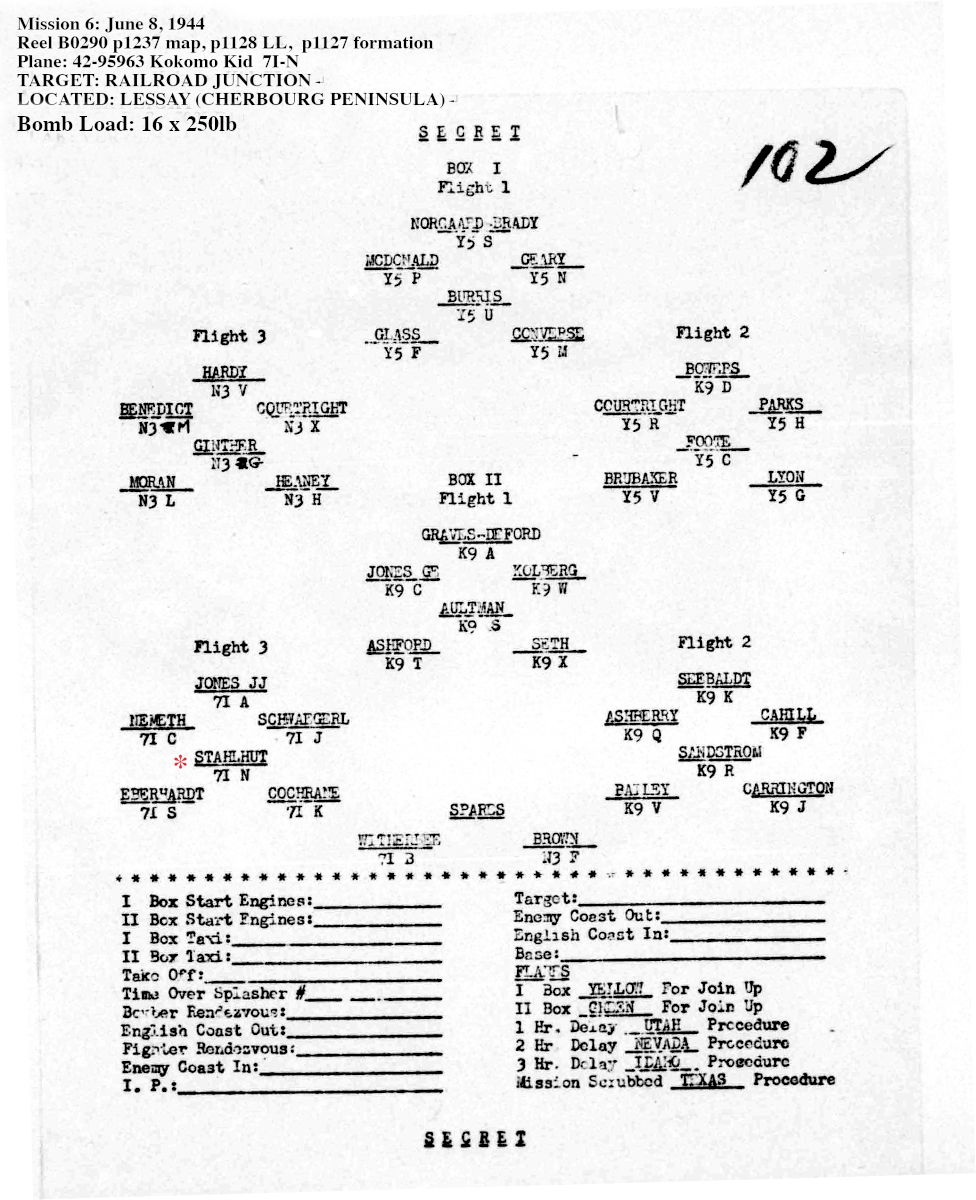
Haskell, Stahlhut and crew flew in formation position 2-3-4. The plane used that day was 42-95963 Kokomo Kid 7I-N. The lead plane was piloted by Norgaard and Brady in 42-95876 Mary Jo Y5-S .
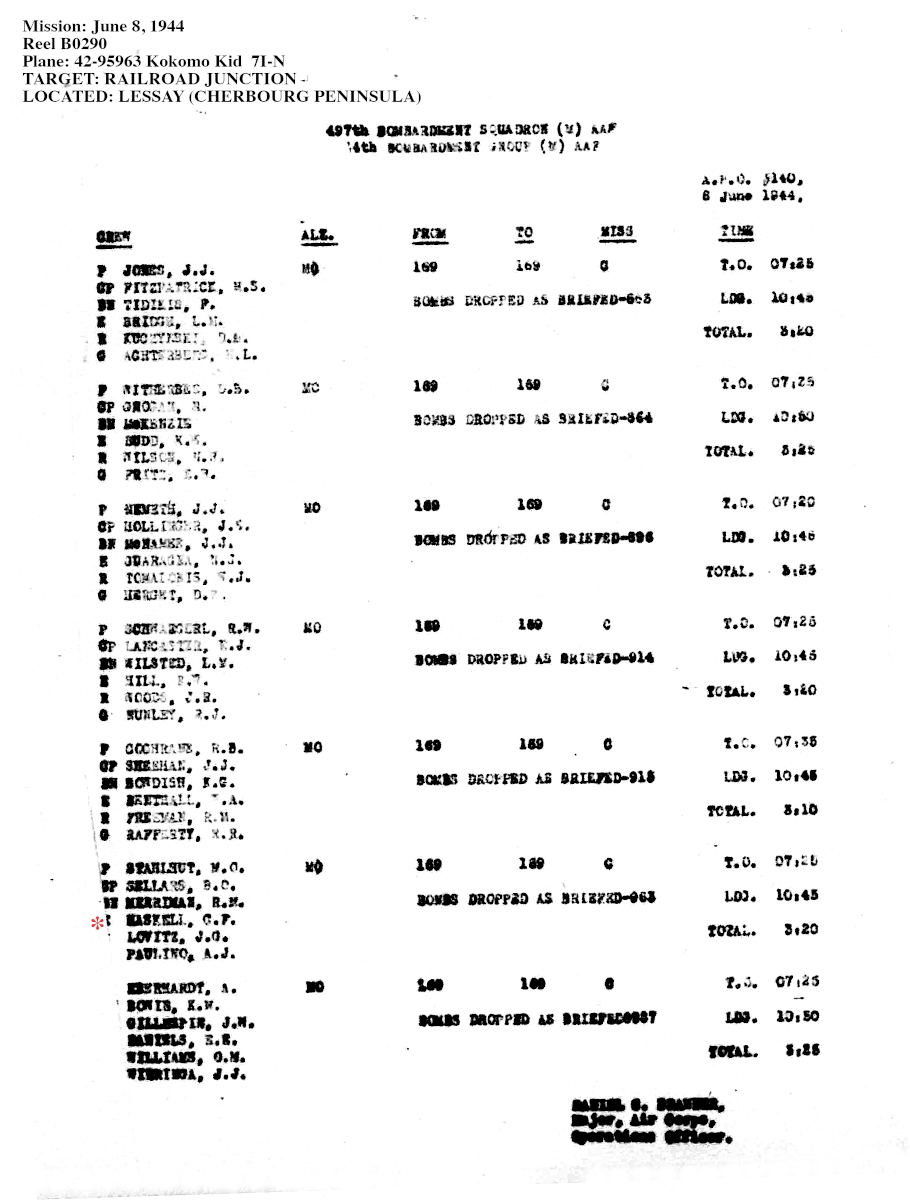
The crew consisted of; Pilot- Lt. Melvin O Stahlhut, Co-pilot- Sellars, Bombardier/Navigator- Merriman, Radio/Gunner- Lovitz, Engineer/Gunner- Haskell, Tail Gunner- Paulino. They took off at 7:25 am in 42-95963 Kokomo Kid 7I-N and landed at 10:45 am. The bombs were dropped as briefed.
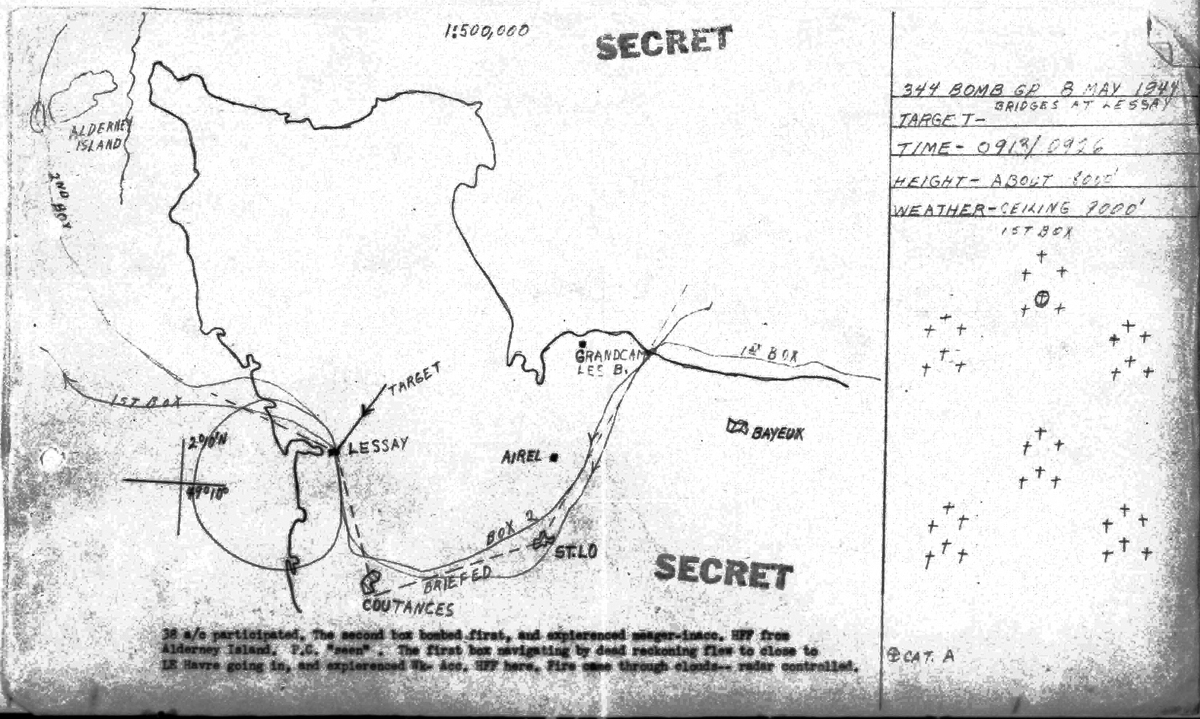
38 aircraft participated. The second box bombed first and experienced meager, inaccurate flak from Alderney Island. P.C. seen. the first box, navigating by dead reckoning, flew too close to LeHavre going in and experienced weak but accurate flak. Radar controlled fire came through the clouds. The formation was over target 9:13 at 8000 ft. The ceiling was about 9000 ft. Burris’ plane, 42-107669 Feudin Wagin Y5-U, in position 1-1-4, received Cat. A damage.
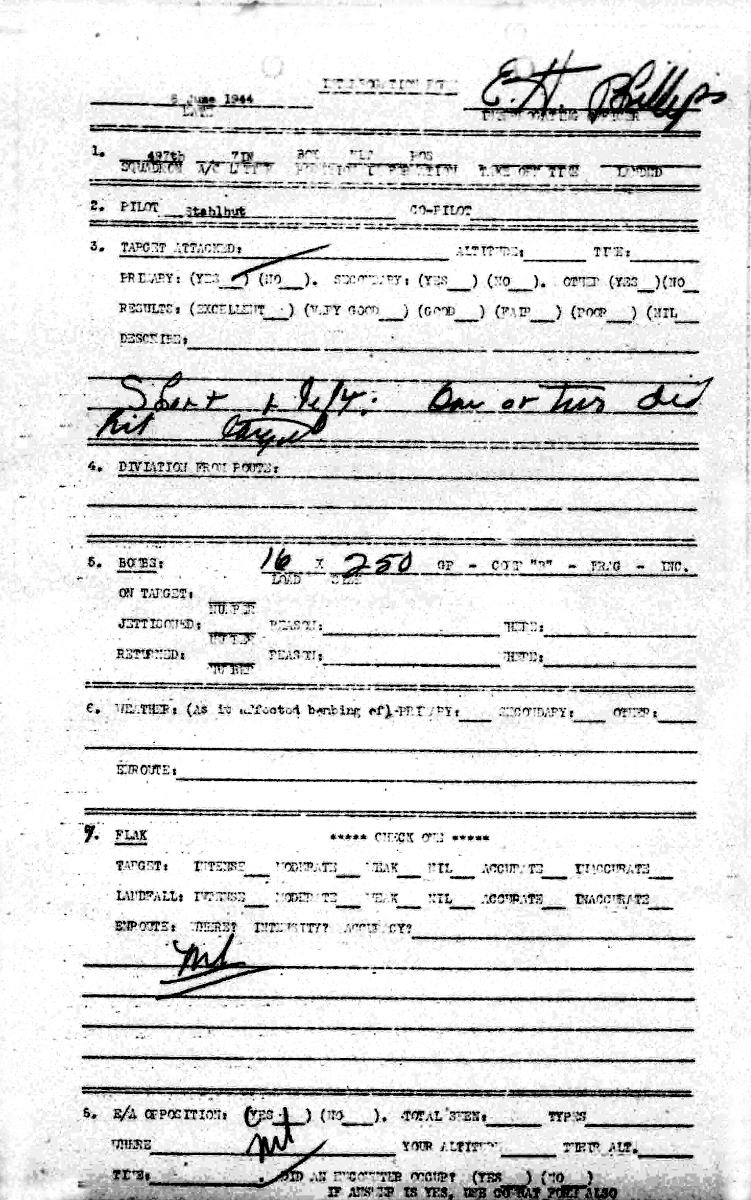
According to Stahlhut, the primary target was attacked with 16 x 250lb bombs. Most of the bombs landed short and to the left of the target. One or two did hit the target.
The family of S/Sgt. Clayton F. Haskell shared a treasure trove of memorabilia that he saved. Enjoy.
